Category: National Conservation & Mitigation
Forest and Tree Cover in India
03, Mar 2023

Context:
- India mapped its forest cover over four decades and why making the data freely available will improve the quality of this vital policy input.
How is Tree Cover Different from Forest Cover?
- Tree cover refers to the total area of land that is covered by trees, regardless of whether or not the trees are part of a forest ecosystem.
- Forest cover, on the other hand, refers specifically to the area of land that is covered by a forest ecosystem, which is defined as an area with a tree canopy density of more than 10% and an area of more than 1 hectares.
- So, all forest cover is tree cover, but not all tree cover is forest cover.
What is the National Mission for a Green India?
- GIM is one of the eight Missions under the National Action Plan on Climate Change.
- It aims at protecting, restoring and enhancing India’s forest cover and responding to climate change.
- The target under the Mission is 10 million hectares (Mha) on forest and non-forest lands for increasing the forest/tree cover and to improve the quality of existing forest.
- The Ministry of Environment, Forest and Climate Change supports the States/Union Territories for carrying out afforestation activities through this Centrally Sponsored Scheme.
- Improving tree cover is critical to sequester carbon and bolster India’s carbon stocks as part of its international commitments to mitigate greenhouse gas emissions.
What is the Status of Forests in India?
- As per the India State of Forest Report-2021, forest and tree cover in the country increased by 2,261 square kilometres since the last assessment in 2019.
- India’s total forest and tree cover was 80.9 million hectares, which accounted for 24.62% of the geographical area of the country.
- The report said 17 States and Union Territories had more than 33% of their area under forest cover.
- Madhya Pradesh had the largest forest cover, followed by Arunachal Pradesh, Chhattisgarh, Odisha and Maharashtra.
- The top five States in terms of forest cover as a percentage of their total geographical area were Mizoram (84.53%), Arunachal Pradesh (79.33%), Meghalaya (76%), Manipur (74.34%) and Nagaland (73.90%).
Issues Associated with Forests in India:
- Shrinking Forest Cover: According to the National Forest Policy of India, the ideal percentage of total geographical area under forest should be at least 33% to maintain ecological stability. However, it currently covers just 24.62% of the country’s land and is shrinking rapidly.
- Resource Access Conflict: There is often conflict between the interests of local communities and those of commercial interests, such as pharmaceutical industries or timber industries. This can lead to social tensions and even violence, as different groups struggle to access and use the resources of the forests.
- Climate Change: Forest disturbances caused by climate change, including insect outbreaks, invasive species due to climate led migration, wildfires, and storms, reduce forest productivity and change species distribution. By 2030, 45-64% of forests in India will experience the effects of climate change and rising temperatures.
Government Initiatives for Forest Conservation:
- National Afforestation Programme
- Environment Protection Act of 1986
- Scheduled Tribes and Other Traditional Forest Dwellers (Recognition of Forest Rights) Act, 2006
How can India Enhance its Forest Cover?
- Utilising Technology for Conservation: Technology can be utilised such as remote sensing, to monitor and track forest cover, forest fire and identify areas in need of protection.
- Also, Potential resource mapping can be done in unexplored forest areas, and they can be brought under scientific management and sustainable resource extraction maintaining density and forest health.
- Dedicated Forest Corridors: For safe intrastate and interstate passage of wild animals and protecting their habitat from any external influence, dedicated forest corridors can be maintained giving a message of peaceful-co existence.
- Promoting Agroforestry: This practice involves integrating trees and forest-based products into farming systems. This can help increase forest cover and also provide farmers with additional income and resources.
Deep Sea Fish Conservation
18, Feb 2023
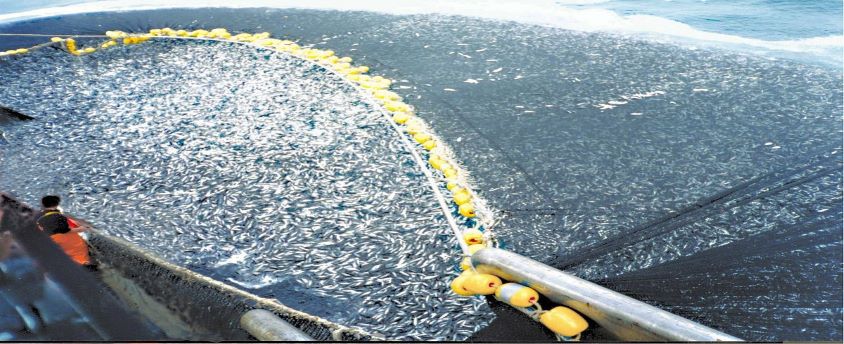
Why in News?
- Supreme Court (SC) has given permission to fishermen using Purse Seine Fishing gear to fish beyond territorial waters (12 nautical miles) and within the Exclusive Economic Zone (EEZ) (200 nautical miles) of Tamil Nadu but observing certain restrictions.
About the News:
- This comes in the backdrop against the banning of purse seine fishing by the Tamil Nadu Government in February 2022.
- SC has restricted the purse seiner to fish on two days, Monday and Thursday from 8am to 6pm revoking the complete ban imposed by Tamil Nadu government.
What are the Concerns?
Insufficient Conservation Efforts:
- Court’s order seems to be more concerned about regulating fishing with administrative and transparency measures than about the conservation measures and obligations under the United Nations Convention on the Law of the Sea (UNCLOS).
- Under UNCLOS, coastal states have sovereign rights to ensure that the living and non-living resources of the EEZ are used, conserved and managed, and not subject to overexploitation.
- In order to prevent overexploitation, coastal States must determine the total allowable catch (TAC) in the EEZ.
- Restricting the purse seiner to fish on two days is not sufficient without regulating fishing methods.
Threatens Livelihood of Traditional Fishers:
- Purse seiners tend to overfish, unlike traditional fishermen using traditional fish gear, thus endangering the livelihood of the traditional fisher.
- It is a non-targeted fishing gear and catches all sorts of fishes which come in the way of the net, including juveniles. Hence, they are very much detrimental to marine resources.
Threat to Food Security:
- A major concern is the dwindling availability of oil sardines, a favourite of Kerala fish eaters.
- In 2021, Kerala recorded a catch of just 3,297 tonnes of sardine, a sharp decrease from the haul of 3.9 lakh tonnes in 2012.
Threatens Endangered Species:
- Non-selective fishing methods by purse seiners resulting in the by-catch of other marine living species (which could include endangered species too) may threaten with a potential trade embargo.
What is UNCLOS?
- The UNCLOS, 1982 is an international agreement that establishes the legal framework for marine and maritime activities.It is also known as Law of the Sea. It divides marine areas into five main zones namely- Internal Waters, Territorial Sea, Contiguous Zone, Exclusive Economic Zone (EEZ) and the High Seas.
- It is the only international convention which stipulates a framework for state jurisdiction in maritime spaces. It provides a different legal status to different maritime zones.
- It provides the backbone for offshore governance by coastal states and those navigating the oceans.
- It not only zones coastal states’ offshore areas but also provides specific guidance for states’ rights and responsibilities in the five concentric zones.
What is Purse Seine Fishing?
- A purse seine is made of a long wall of netting framed with floating and leadline and having purse rings hanging from the lower edge of the gear, through which runs a purse line made from steel wire or rope which allow the pursing of the net.
- The technique is considered to be an efficient form of fishing and has been widely deployed on India’s western coasts.
- It is used in the open ocean to target dense schools of single-species pelagic (midwater) fish like tuna and mackerel.
What are the Conservation Efforts for Marine Animal Resources?
The United Nations General Assembly passed Resolutions in 1989 and 1991:
- It called for a moratoria on all large-scale pelagic drift net fishing vessels in high seas.
UN (United Nations) Ocean Conference 2022:
- To ensure global cooperation towards protection and sustenance of the Ocean ecosystem of the world.
One Ocean Summit:
- Combating illegal fishing, decarbonising shipping and reducing plastic pollution.
Convention for the Conservation of Southern Bluefin Tuna 1993 (SBT):
- The objective of this Convention is to ensure, through appropriate management, the conservation and optimum utilisation of southern bluefin tuna
Convention for the Prohibition of Fishing with Long Drift Nets 1989:
- It is a regional convention in the South Pacific to restrict port access for drift net fishing vessels.
Tarawa Declaration 1989:
- It is a declaration of the South Pacific Forum to prohibit the use of large drift nets or at least call for their prohibition.
Ecologically Sensitive Zones
04, Feb 2023

Why in News?
- The National Green Tribunal (NGT) has issued directions to the Uttarakhand Government to conduct a study of the specific carrying capacity of the hill station.
What’s the issue?
- Last year a panel was formed to assess the carrying capacity of eco-sensitive zones in Shimla (Himachal Pradesh).
Key highlights:
- A nine-member committee has been formed to suggest remedial measures for preventing environmental damage to the town.
- A study on Mussoorie’s carrying capacity by the Lal Bahadur Shastri National Academy of Administration in 2001 suggested that no further construction was viable.
- An analysis of the carrying capacity of eco-sensitive areas in Himalayan regions in a holistic manner is necessary for the protection of the environment.
- Terms of reference for the committee:
- Suggest remedial measures to prevent environmental damage in the light of carrying capacity
- Hydro-geology studies
- Geo-morphological studies
- Covering other allied and incidental issues.
About Carrying Capacity:
- The total number of individuals of a species that can live in an ecosystem under certain conditions. More recently the concept has been expanded beyond ecology by including economic, social, and infrastructure imperatives.
- Urban Carrying Capacity (UCC): It provides a theoretical foundation for determining the maximum potential population that could be supported without environmental degradation, based on the inherent limitations of a city
Global Practices on Urban Carrying Capacity:
- China’s mega-cities demonstrate that the UCC framework can be simplified to quantify and evaluate indicators across sectors and use them appropriately for sustainable urban land management practices.
What are ESZ/Ecologically Fragile Areas (EFA)?
- ESZ is intended to protect ‘protected areas’ – national parks and wildlife sanctuaries – by effectively creating insulating layers around such protected areas where humans and nature can be at peace with each other.
- Objectives of creating ESZ:
- To create a shock absorber by regulating and managing the activities around protected areas. To serve as a transition zone between areas of high protection and areas of lower protection.
- Notified and regulated by: They are notified by the Union Ministry of Environment, Forest and Climate Change (MoEFCC) and regulated under the Environment Protection Act 1986 (though the EPA does not mention the word ‘ESZ’).
- Criteria to designate ESZ:
- Based on species (endemism, rarity, etc)
- Based on the ecosystem (sacred groves, frontier forests, etc)
- Based on geomorphological features (uninhabited islands, origins of rivers, etc)
- Extent of ESZ:
- An ESZ’s distribution can vary in breadth and extent. For example, the extent of ESZ from the boundary of a protected area ranges from 0 to 45.82 km (in Pin Valley National Park, HP).
- The ESZs span notified forests outside protected areas, most of which could also come under gram sabhas’ jurisdiction under the FRA.
Issues with ESZ:
Not in sync with FRA and PESA:
- The Forest Rights Act (FRA) 2006, recognises the customary and traditional rights (both individual and collective) of forest-dwellers on forest land, including inside protected areas. Under the FRA, a new category of forests called ‘community forest resource’ (CFR) has been created and has to be managed by the Gram Sabhas.
- Similarly, the Provisions of the Panchayat (Extension to Scheduled Areas) Act (PESA) 1996, empower Gram Sabhas to safeguard and preserve community resources on forest and revenue lands in Scheduled Areas.
- However, the MoEFCC has shown no inclination to amend the Indian Forest Act 1927, the Wildlife (Protection) Act and the EPA 1986 to comply with PESA and FRA.
Way Forward:
- Mining and other activities have long depleted the nation’s natural resources.
- As a result, the government’s role should not be limited to that of a “facilitator” of economic activity.
- It must strive to achieve long-term sustainable development by balancing economic development, environmental conservation and the rights of forest dwellers.
Ecologically Sensitive Zones
20, Jan 2023

Why in News?
- The creation of the Ecologically sensitive zones (ESZ) has sparked protests in Kerala and can be a hint of what is likely to occur in other parts of the country.
What’s the issue?
- The problem begins with a notification that ought to have been community-specific but which a ministry offered as a ‘one size fits all’ solution.
Background:
- Protected areas cover 5.26% of India’s land area as 108 national parks and 564 wildlife sanctuaries notified under the Wildlife (Protection) Act 1972 (WPA).
- These protected areas are based on the ‘fortress conservation model’. For example, activities permitted in ‘reserve forests’ are not permitted in national parks and wildlife sanctuaries.
- Surrounding these protected areas is an area of approx. 3.4% of the country’s land, falls under the ESZ regime.
- Governments have notified 341 ESZs in 29 States and 5 UTs, while another 85 ESZs are awaiting notification.
- Together, protected areas and the ESZs cover 8.66% of India’s land area.
What are ESZ/Ecologically Fragile Areas (EFA)?
- ESZ is intended to protect ‘protected areas’ – national parks and wildlife sanctuaries – by effectively creating insulating layers around such protected areas where humans and nature can be at peace with each other.
- Objectives of creating ESZ:
- To create a shock absorber by regulating and managing the activities around protected areas.
- To serve as a transition zone between areas of high protection and areas of lower protection.
- Notified and regulated by: They are notified by the Union Ministry of Environment, Forest and Climate Change (MoEFCC) and regulated under the Environment Protection Act 1986 (though the EPA does not mention the word ‘ESZ’).
- Criteria to designate ESZ:
- Based on species (endemism, rarity, etc)
- Based on the ecosystem (sacred groves, frontier forests, etc)
- Based on geomorphological features (uninhabited islands, origins of rivers, etc)
- Extent of ESZ:
- An ESZ’s distribution can vary in breadth and extent. For example, the extent of ESZ from the boundary of a protected area ranges from 0 to 45.82 km (in Pin Valley National Park, HP).
- The ESZs span notified forests outside protected areas, most of which could also come under gram sabhas’ jurisdiction under the FRA.
Issues with ESZ:
Not in sync with FRA and PESA:
- The Forest Rights Act (FRA) 2006, recognises the customary and traditional rights (both individual and collective) of forest-dwellers on forest land, including inside protected areas.
- Under the FRA, a new category of forests called ‘community forest resource’ (CFR) has been created and has to be managed by the Gram Sabhas.
- Similarly, the Provisions of the Panchayat (Extension to Scheduled Areas) Act (PESA) 1996, empower Gram Sabhas to safeguard and preserve community resources on forest and revenue lands in Scheduled Areas.
- However, the MoEFCC has shown no inclination to amend the Indian Forest Act 1927, the Wildlife (Protection) Act and the EPA 1986 to comply with PESA and FRA.
What is the case of Kerala?
- The Western Ghats (WG) cover 48% of Kerala and nearly 30% of the state is covered by forests.
- There is also a network of lakes, canals and wetlands, as well as a 590-kilometre-long coastline, all of which are governed by a set of environmental conservation laws.
- This leaves little space for its 3.5 crore population, which has a population density of 900 people per square km (much higher than the national average).
- According to an SC directive, at least one km from the boundary of every protected area in Kerala should be marked as ESZ. The Kerala State Assembly recently unanimously passed a resolution urging the Central Government to exempt the state’s human settlements, farmlands, and public institutions from the ESZ’s scope.
Way Forward:
- Mining and other activities have long depleted the nation’s natural resources.
- As a result, the government’s role should not be limited to that of a “facilitator” of economic activity.
- It must strive to achieve long-term sustainable development by balancing economic development, environmental conservation and the rights of forest dwellers.
Forest rights and heritage conservation
27, Dec 2022

Why in News?
- Before recognising areas as world heritage sites, UNESCO seeks the opinion of the inhabitants on the implication of the possible declaration on their lives and livelihoods.
What is a community forest resource?
- It is the common forest land that has been traditionally protected and conserved for sustainable use by a particular community.
- The community uses it to access resources available within the traditional and customary boundary of the village; and for seasonal use of landscape in case of pastoralist communities.
Community Forest Resource rights:
- These rights are recognised under Section 3(1)(i) of the Scheduled Tribes and Other Traditional Forest Dwellers (Recognition of Forest Rights) Act (commonly referred to as the Forest Rights Act or the FRA).
- They provide for recognition of the right to “protect, regenerate or conserve or manage” the community forest resource.
- These rights allow the community to formulate rules for forest use by itself and others and thereby discharge its responsibilities under Section 5 of the FRA.
Significance of these rights and their recognition:
- CFR rights, along with Community Rights (CRs) which include nistar rights and rights over non-timber forest products, ensure sustainable livelihoods of the community.
- These rights give the authority to the Gram Sabha to adopt local traditional practices of forest conservation and management within the community forest resource boundary.
- It also underlines the integral role that forest dwellers play in sustainability of forests and in conservation of biodiversity.
About Forest Rights Act (FRA):
- The act was passed in December 2006. It deals with the rights of forest-dwelling communities over land and other resources. The Act grants legal recognition to the rights of traditional forest dwelling communities, partially correcting the injustice caused by the forest laws.
Rights under the Act:
- Title rights – Ownership to land that is being farmed by tribals or forest dwellers subject to a maximum of 4 hectares; ownership is only for land that is actually being cultivated by the concerned family, meaning that no new lands are granted.
- Use rights – to minor forest produce (also including ownership), to grazing areas, to pastoralist routes, etc.
- Relief and development rights – to rehabilitation in case of illegal eviction or forced displacement; and to basic amenities, subject to restrictions for forest protection.
- Forest management rights – to protect forests and wildlife.
Eligibility:
- Eligibility to get rights under the Act is confined to those who “primarily reside in forests” and who depend on forests and forest land for a livelihood. Further, either the claimant must be a member of the Scheduled Tribes scheduled in that area or must have been residing in the forest for 75 years.
Process of recognition of rights:
- The Act provides that the gram sabhas, or village assembly, will initially pass a resolution recommending whose rights to which resources should be recognised. This resolution is then screened and approved at the level of the sub-division (or taluk) and subsequently at the district level. The screening committees consist of three government officials (Forest, Revenue and Tribal Welfare departments) and three elected members of the local body at that level. These committees also hear appeals.
A conservation Bill that Endangers Forest Rights
15, Dec 2022

Why in News?
- Recently, the Rajya Sabha passed the Wild Life (Protection) Amendment Bill, 2022 which seeks to give effect to India’s obligations under the Convention on International Trade on Endangered Species of Wild Fauna and Flora (‘CITES’).
What is the Objective of Bill?
- Protection of Endangered Species: Bill seeks to enhance punishment for illegal Wildlife trade.
- Better Management of Protected Areas: It provides for certain permitted activities like grazing or movement of livestock and Bonafide use of drinking and household water by local communities.
- Protection of Forest Lands: It is so critical because it equally inculcates in itself the protection of rights of the people who have been residing there since ages.
What are the Proposed Amendments?
- This amendment proposed a new schedule for species listed in the Appendices under CITES.
- Section 6 has been amended to constitute Standing Committee to exercise such powers and duties as may be delegated to it by the State Board for Wildlife.
- Section 43 of the act amended which permitted the use of elephants for ‘religious or any other purposes’. To enable the Central government to appoint a Management Authority Section 49E has been inserted.
- To allow the Central Government to appoint a Scientific Authority to provide guidance on matters relating to the impact on the survival of the specimens on being traded.
- The Bill also empowers Central government to regulate and stop the import, trade or possession of invasive plant or animal alien species.
- The Bill also enhances the penalties prescribed for violation of provisions of the Act.
- For ‘General violations’, maximum fine is increased from 25,000 to 1 lakh.
- In case of Specially protected animals, the minimum fine of Rs. 10,000 has been enhanced to Rs. 25,000.
What are the Concerns Associated with the Bill?
- Phrase “any other purpose” is vague and has potential of encouraging commercial trade of elephants.
- Some important issues regarding Human-Wildlife conflict, Eco-sensitive zone rule, etc., has not been addressed.
- According to the report provided by the Parliamentary Standing Committee, species listed in all three schedules of the Bill are incomplete.
- The scientists, botanists, biologists are short in number and needed greater inclusion of them to accelerate the process of listing all existing species of wildlife.
What is the Wild Life (Protection) Act, 1972?
- The Wild Life (Protection) Act, 1972 provides a legal framework for the protection of various species of wild animals and plants, management of their habitats, regulation and control of trade in wild animals, plants and products made from them.
- The act also lists schedules of plants and animals that are afforded various degrees of protection and monitoring by the government.
What is the CITES?
- The CITES is an international agreement to which States and regional economic integration organizations adhere voluntarily.
- CITES was drafted as a result of a resolution adopted in 1963 at a meeting of members of the International Union for Conservation of Nature (IUCN).
- CITES entered into force in July 1975.
- The CITES Secretariat is administered by UNEP (The United Nations Environment Programme) and is located at Geneva, Switzerland.
- India is a signatory to the CITES.
What are the Constitutional Provisions for Wildlife Conservation?
- The 42nd Amendment Act, 1976, Forests and Protection of Wild Animals and Birds was transferred from State to Concurrent List.
- Article 51A(g) of the Constitution states that it shall be the fundamental duty of every citizen to protect and improve the natural environment including forests and Wildlife.
- Article 48 A in the Directive Principles of State policy, mandates that the State shall endeavor to protect and improve the environment and to safeguard the forests and wildlife of the country.
Way Forward:
- Strict enforcement of law is necessary for the conservation of the wildlife.
- Businesses and corporations involved in real estate must adhere to the law rigorously to balance out their financial and muscle strength. Nicobar jungles are being completely ruined and removed for the benefit of some corporations.
- So essentially, the wildlife is actually attacked not by humans but by the corporations.
- Only having regulations and technological understanding are not sufficient, local communities must also realize the value of their engagement.
A Tougher Law to Prevent Cruelty to Animals
26, Nov 2022

Why in News?
- The Union Ministry of Fisheries, Animal Husbandry and Dairying have opened a draft Prevention of Cruelty to Animals (Amendment) Bill, 2022, for public comment.
Background:
- The draft is an attempt to overhaul the Prevention of Cruelty to Animals (PCA) Act, 1960, introducing 61 amendments to the law.
- Along with animal welfare organisations, the Supreme Court (in A Nagaraja case 2014) asked the Parliament to amend the PCA Act to provide an effective deterrent.
- In 2020, a group of MPs cutting across party lines wrote to the then Animal Husbandry Minister, urging that the punishment in the 1960 Act be increased.
The main changes proposed in the 1960 law:
- Five freedoms to animals: Every person in charge of an animal must ensure that the animal has freedom from –
- Thirst, hunger and malnutrition;
- Discomfort due to environment;
- Pain, injury and diseases;
- Fear and distress, and the
- Freedom to express normal behaviour for the species
- Defining “gruesome cruelty”: Any act involving animals that causes extreme pain and suffering and is likely to leave the animal disabled for life. It proposed to include “Bestiality” as a crime under “Gruesome cruelty.”
- Several offences have been made cognizable: This means offenders can be arrested without an arrest warrant.
- Responsibility of local governments: In the case of a community animal, the local government (municipality/panchayats) shall be responsible for taking care of such animals in a manner developed by the State Government or by the Board.
- More stringent punishments: The draft proposes fines from Rs 50,000 – 75,000 or the cost of the animal, whichever is more, or with imprisonment of 1-3 years, or with both, for the offence of gruesome cruelty. It suggests a maximum of 5 years imprisonment for killing an animal.
Need for strengthening the law:
- Increasing instances of cruelty to animals in India.
- Poor deterrence for potential offenders: First-time offenders under the PCA Act are punished with a fine of Rs 10-50, otherwise a fine between Rs 25 – 100, a jail term of three months, or both.
Concerns:
- Simply increasing the quantum of punishment may not be enough to stop cruelty against animals.
- Some already marginalised communities like madaris and snake charmers may be disproportionately affected.
SC on cruelty to the animal while recently hearing the Jallikattu case:
- Prevention of cruelty is not an “absolute idea”.
- The Constitution commands us to be compassionate to all living creatures, but it should have a balance. Should we, for example, be compassionate if a mosquito lands on us?
- Animals should be treated as friends, and brothers and they have the same rights as human beings.
- The Constitution recognises liberty, which is inherent in every living being, whether it be in any form of life.
Way ahead:
- Behavioural changes through sensitisation programs.
- Steps are needed to mitigate the larger issues of vanishing animal habitats and climate change exacerbating man-animal conflict.
Tamil Nadu tells SC it doesn’t want Neutrino Observatory
18, Feb 2022
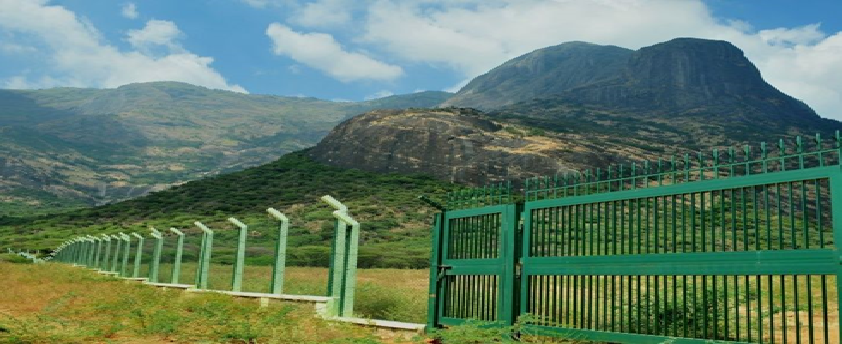
Why in News?
- Tamil Nadu has made clear to the Supreme Court that it does not want the Indian Neutrino Observatory (INO) to be set up in a sensitive ecological zone in the Western Ghats at great cost to wildlife, biodiversity, and by ignoring the local opposition and public agitations to the project.
About the project:
- The India-based Neutrino Observatory (INO) Project is a multi-institutional effort aimed at building a world-class underground laboratory with a rock cover of approx.1200 m for non-accelerator based high energy and nuclear physics research in India. The initial goal of INO is to study neutrinos.
- It is a mega-science project jointly funded by the Department of Atomic Energy (DAE) and the Department of Science and Technology (DST).
- The project includes:
- Construction of an underground laboratory and associated surface facilities at Pottipuram in Bodi West hills of Theni District of Tamil Nadu.
- Construction of an Iron Calorimeter (ICAL) detector for studying neutrinos.
- Setting up of National Centre for High Energy Physics at Madurai, for the operation and maintenance of the underground laboratory, human resource development and detector R&D along with its applications.
What are Neutrinos?
- Neutrinos, first proposed by Swiss scientist Wolfgang Pauli in 1930, are the second most widely occurring particle in the universe, only second to photons, the particle which makes up light. In fact, neutrinos are so abundant among us that every second, there are more than 100 trillion of them passing right through each of us — we never even notice them.
- Neutrinos occur in three different types, or flavours. These are separated in terms of different masses. From experiments so far, we know that neutrinos have a tiny mass, but the ordering of the neutrino mass states is not known and is one of the key questions that remain unanswered till today.
- This is a major challenge INO will set to resolve, thus completing our picture of the neutrino.
Why Detect them?
- Neutrinos hold the key to several important and fundamental questions on the origin of the Universe and the energy production in stars. Another important possible application of neutrinos is in the area of neutrino tomograph of the earth, that is detailed investigation of the structure of the Earth from core on wards.
- This is possible with neutrinos since they are the only particles which can probe the deep interiors of the Earth.
Why should the Laboratory be Situated Underground?
- Neutrinos are notoriously difficult to detect in a laboratory because of their extremely weak interaction with matter.
- The background from cosmic rays (which interact much more readily than neutrinos) and natural radioactivity will make it almost impossible to detect them on the surface of the Earth. This is the reason most neutrino observatories are located deep inside the Earth’s surface.
- The overburden provided by the Earth matter is transparent to neutrinos whereas most background from cosmic rays is substantially reduced depending on the depth at which the detector is located.
What is the State’s Concern?
- The State said the project would be a source of distress to the shy tigers and cause “enormous” irreversible damage to the already bogged down Western Ghats.
- The project falls exactly on the hill slopes of this part of the Western Ghats, which align within it a significant tiger corridor, namely the Mathikettan-Periyar tiger corridor.
- This corridor links the Periyar Tiger Reserve along the Kerala and Tamil Nadu borders and the Mathikettan Shola National Park, the State pointed out.
- The proposed project area also ecologically links to the eastern habitats, where Srivilliputhur Meghamalai Tiger Reserve is located. It hosts tigers from this region and helps in Genetic Dispersal.
- The least disturbance would have a huge impact on tiger movement. The area, the State explained, is a significant watershed and catchment zone for the rivers Sambhal and Kottakudi.
Importance of the Western Ghats:
- The Western Ghats is an extensive region spanning over six States. It is the home of many endangered plants and animals. It is a UNESCO World Heritage site.
- It is one of the eight “hottest hot-spots” of biological diversity in the world.
- According to UNESCO, the Western Ghats are older than the Himalayas. They influence Indian monsoon weather patterns by intercepting the rain-laden monsoon winds that sweep in from the south-west during late summer.
Chardham Project
14, Feb 2022
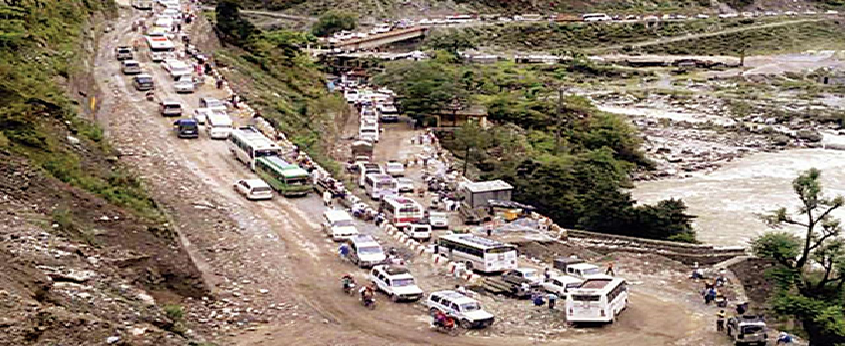
Why in News?
- Veteran environmentalist Ravi Chopra has resigned as chairman of the Supreme Court’s High Powered Committee (HPC) on the Char Dham project, saying that his “belief that the HPC could protect this fragile (Himalayan) ecology has been shattered”.
What’s the Issue?
- In his resignation letter to the secretary general of the Supreme Court on January 27, Chopra referred to the apex court’s December 2021 order that accepted the wider road configuration to meet defence needs, instead of what the HPC had recommended and the SC accepted in its earlier order in September 2020.
What has the Court said so far in this Matter?
- In 2018, the project was challenged by an NGO for its potential impact on the Himalayan ecology due to felling trees, cutting hills and dumping excavated material.
- In 2019, the SC formed the HPC Chopra to examine the issues, and in September 2020, accepted his recommendation on road width etc.
- In November 2020, the ministry of Defence sought wider roads to meet the requirement of the Army.
- In December 2021, the SC modified its September 2020 order on the ground that the court could not “interrogate the policy choice of the establishment which is entrusted by law with the defence of the Nation”.
About Chardham Project:
- It is a programme taken up by the Ministry of Road Transport and Highways for connectivity improvement for Chardham (Kedarnath, Badrinath, Yamunotri and Gangotri) in Uttrakhand and part of the route leading to Kailash Mansarovar Yatra.
- The cost of the project is around 12,000 Crore.
- It envisages improvement as well as development of 889 km length of national Highways.
- Implementing Agencies are Uttarakhand State Public Works Department (PWD), BRO and the National Highway & Infrastructure Development Corporation Limited (NHIDCL).
- The work under the programme is being implemented on Engineering, Procurement and Construction (EPC) mode.
- Under the EPC mode, the project cost is completely borne by the Government.
- However, the contractor is directly responsible for ensuring quality of the work as well as rectification of defects and maintenance of the project stretch for a period of 4 years after completion of construction.
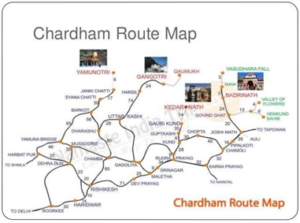
Developments so far with Respect to the Chardham Project:
- The Foundation stone for the Char Dham road project was laid by PM Narendra Modi in December 2016.
- But the project was challenged on environmental grounds in courts with petitioners alleging irregularities vis-a-vis environmental clearances for the project and that it was being pursued in violation of existing norms.
- The National Green Tribunal (NGT) cleared the project in September 2018, but its order was challenged for being passed by a bench different from the one that had heard the Supreme Court stayed the NGT order in October 2018.
- In September 2020, it passed an order on a writ petition stating that highways for the Char Dham project should not exceed 5.5m in width as prescribed in a 2018 circular of the Union Road Transport Ministry. But the Defence Ministry had in December that year sought a modification in the order to allow the width to be of 10m.
- The top court then asked its high-powered committee (HPC) to look into the contentions raised by the Centre on the width of the Highways.
Impact of Developmental Projects in Himalayas:
- Himalayas are the world’s youngest mountain range. They are prone to erosion, landslides and seismic activity and rainstorms lashed the region. Therefore, this region is vulnerable and fragile.
- There is a clear link between climate change and changing rainfall patterns in the Scientists are now certain that rainfall in India will become more extreme. There are higher possibilities of cloudbursts and “unprecedented” high rainfall over the region.
- There is a link between the disaster and the manner in which “development” has been carried out in this ecologically fragile region. E.g hydropower projects. Currently, there are roughly 70 projects built or proposed on the Ganga. Hence the river would be modified through diversion to tunnels or reservoirs to such an extent that 80 per cent of the Bhagirathi and 65 percent of the Alaknanda could be “affected”.
- The construction itself would have devastating impacts on the mountains – because of blasting to build tunnels and Also construction is carried out without the necessary precautions, thus the risk of landslides increases. The situation is the same when it comes to the building of roads, buildings or mining for minerals. Cases of illegal mining and construction are becoming familiar.
- Tourism is being considered as the major engine driving the economy of Himalayan states which has provided valuable economic and livelihood opportunities to the locals and profits for the state governments. On the other hand, air and noise pollution, overbooked hotels, increasing and unregulated tourist footfall, Urbanization, haphazard infrastructure non-availability of parking places, and local water and energy security are becoming recurrent problems.
- Over exploitation of natural resources, food insecurity, ill-planned urbanization, loss of indigenous culture, natural disasters, increase in Municipal sewage are impacting the Himalayan ecology. Cold climate in the mountains also restricts faster decomposition of garbage, thus often leading to their Draining into Rivers.
- This contaminates aquatic life downstream and degrades the quality of the river water on which depends a large population. Places like Shimla are already battling with water crisis and outbreak of waterborne hepatitis because of improper sewage and garbage management.
About Border Roads Organisation:
- It was conceived and raised in 1960 by Pandit Jawaharlal Nehru for coordinating the speedy development of a network of roads in the North and the North Eastern border regions of the country.
- It works under the administrative control of the Ministry of Defence.
- It has diversified into a large spectrum of construction and development works comprising airfields, Building Projects, Defence works and tunneling and has endeared itself to the People.
India State of Forest Report 2021
17, Jan 2022
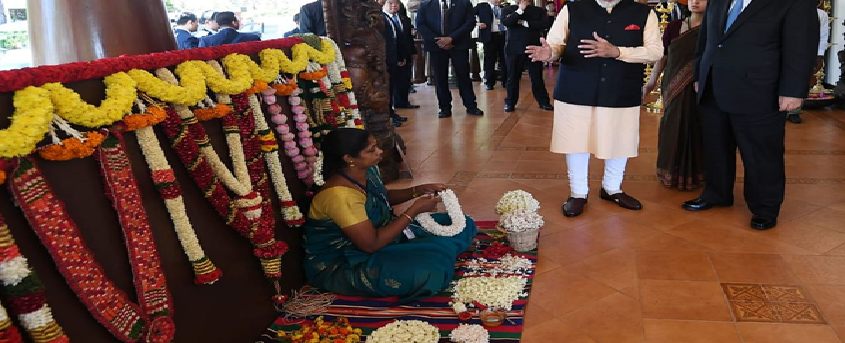
Why in News?
- The Ministry of Environment, Forests and Climate Change (MoEFCC) has released the India State of Forest Report (ISFR) 2021.
Highlights of the Report:
- The biennial report by the Forest Survey of India (FSI) is an assessment of the country’s forest resources.
- India’s forest and tree cover has risen by 2,261 square kilometers in the last two years with Andhra Pradesh growing the maximum forest cover of 647 square kilometers.
- The total tree-and-forest cover in the country includes an increase of 1,540 square kilometres of forest cover and 721 sq km of tree cover compared to the 2019 report.
- India’s total forest and tree cover is now spread across 80.9 million hectares, which is 62 per cent of the geographical area of the country.
- The top five states in terms of increase in forest cover are Andhra Pradesh (647 sq km), Telangana (632 sq km), Odisha (537 sq km), Karnataka (155 sq km) and Jharkhand (110 sq km).
- The Gain in forest cover or improvement in forest canopy density may be attributed to better Conservation Measures, Protection, afforestation activities, tree plantation drives and Agroforestry.
- Among the mega cities in the country, Ahmedabad has been the biggest loser when it comes to forest cover.
States with Maximum Forest Cover:
- Area-wise, Madhya Pradesh has the largest forest cover in the country followed by Arunachal Pradesh, Chhattisgarh, Odisha and Maharashtra.
- 17 states/UTs have above 33 per cent of the geographical area under Forest Cover.
- Out of these states and UTs, Lakshadweep, Mizoram, Andaman & Nicobar Islands, Arunachal Pradesh and Meghalaya have more than 75 per cent forest cover.
Mangrove Cover in the Country:
- There is an increase of 17 sq km in mangrove cover in the country as compared to the Previous Assessment of 2019.
- Total mangrove cover in the country is 4,992 sq km.
- Top three states showing mangrove cover increase are Odisha (8 sq km) followed by Maharashtra (4 sq km) and Karnataka (3 sq km).
Carbon Stock:
- The total carbon stock in the country’s forest is estimated to be 7,204 million tonnes and there is an increase of 79.4 million tonnes in the carbon stock of the country as compared to the last assessment of 2019.
- The annual increase in the carbon stock is 39.7 Million Tonnes.
Concerns:
- The north-east did not show positive results as the current assessment showed a decrease of forest cover to the extent of 1,020 sq km in the region.
- Arunachal Pradesh lost the maximum forest cover of 257 sq km, followed by Manipur which lost 249 sq km, Nagaland 235 sq km, Mizoram 186 sq km and Meghalaya 73 sq km.
- In total 140 hill districts of the country, the forest cover reduced by 902 sq km in the last two years. In the 2019 report, the forest cover in the hill regions had increased by 544 sq km.
Efforts by Government to Increase Forest Cover in the Country:
- To achieve India’s aim of increasing additional carbon sink of 2.5 to 3 billion tonnes CO2 equivalent by 2030, Nagar Van Yojna has been introduced to increase the tree cover and joined with the second phase of Green Mission in the next five years.
Significant features of ISFR 2021:
- In the present ISFR 2021, FSI has included a new chapter related to the assessment of forest cover in the Tiger Reserves, Corridors and Lion conservation area of India.
- A new initiative of FSI has also been documented in the form of a chapter, where the ‘Above Ground Biomass’ has been estimated. FSI, in collaboration with Space Application Centre (SAC), ISRO, Ahmedabad, initiated a special study for estimation of Above Ground Biomass (AGB) at pan-India level, using L- band of Synthetic Aperture Radar (SAR) data.
- FSI in collaboration of with Birla Institute of Technology & Science (BITS) Pilani, Goa Campus has performed a study based on ‘Mapping of Climate Change Hotspots in Indian Forests’. The collaborative study was carried out with the objective to map the climatic hotspots over the forest cover in India, using computer model-based projection of temperature and rainfall data, for the three future time periods i.e. year 2030, 2050 and 2085.
- The Report also contains information on various parameters State/UT wise. Special Thematic Information on forest cover such as hill, tribal districts, and north eastern region has also been given Separately in the report.
WILDLIFE PANEL HOLDS VIRTUAL CONFERENCE
09, Apr 2020
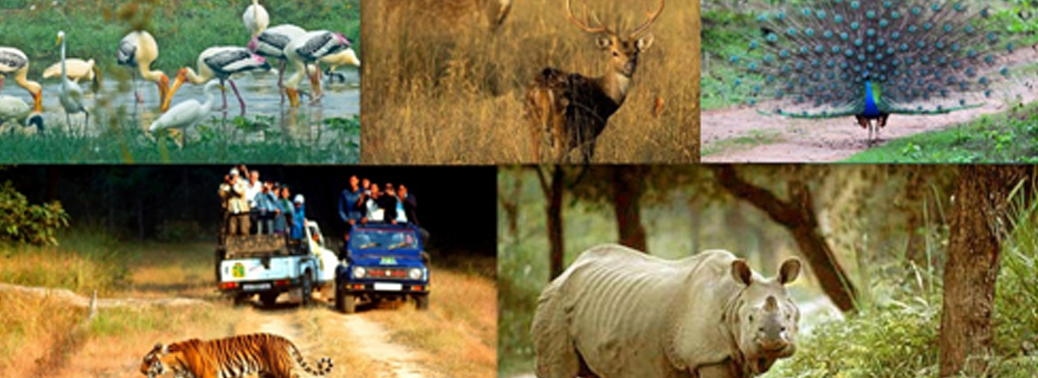
Why in News?
- The Standing Committee of the National Board for Wildlife (NBWL) had its first ever video-conferencing meet recently. In the meet the NBWL cleared infrastructure projects in 11 States.
Key Points:
- Projects that encroach into forests or protected reserves require NBWL approval as part of the government’s environmental clearance process.
- As per the experts associated with the conference most of the projects were given “in-principal approval”.
- In a virtual conference, it is difficult to scrutinise maps that show the location of the proposed projects. It is because only the formal minutes of the meeting would reveal the conditions which projects would have to adhere to.
Process of getting an Environment Clearance (EC):
- An Environment Impact Assessment (EIA) report is prepared to get Environment Clearance (EC) for a project.
- A process of ‘Public Hearing’ is conducted before the issue of ‘Consent to Establish (NOC)’ by state regulators. Concerns of people living in the proposed project area are heard.
- An application form with EIA report, details of public hearing and NOC is submitted for environmental clearance with the Ministry of Environment, Forests and Climate Change (MoEFCC) if the project falls under A category. (or the state government if the project falls under B category).
- The documents submitted for A and B category are then analyzed by an Expert Appraisal Committee (EAC) under the Union Environment Ministry or the concerned State Environmental Impact Assessment Authorities (SEIAAs) respectively.
- The recommendations of the Committee gets processed in the Ministry of Environment, Forests and Climate Change for final approval or rejection.
National Board for Wildlife (NBWL):
- National Board for Wildlife is a statutory Board constituted under the Wild Life (Protection) Act, 1972.
- The NBWL is chaired by the Prime Minister and is responsible for promotion of conservation and development of wildlife and forests.
- The board is ‘advisory’ in nature and can only advise the Government on policy making for conservation of wildlife.
- It is an important body because it serves as an apex body for the review of all wildlife-related matters and for the approval of projects in and around national parks and sanctuaries.
- The standing committee of NBWL is chaired by the Ministry of Environment Forest and Climate Change.
NATIONAL CONFERENCE ON COASTAL DISASTER RISK REDUCTION AND RESILIENCE
28, Feb 2020
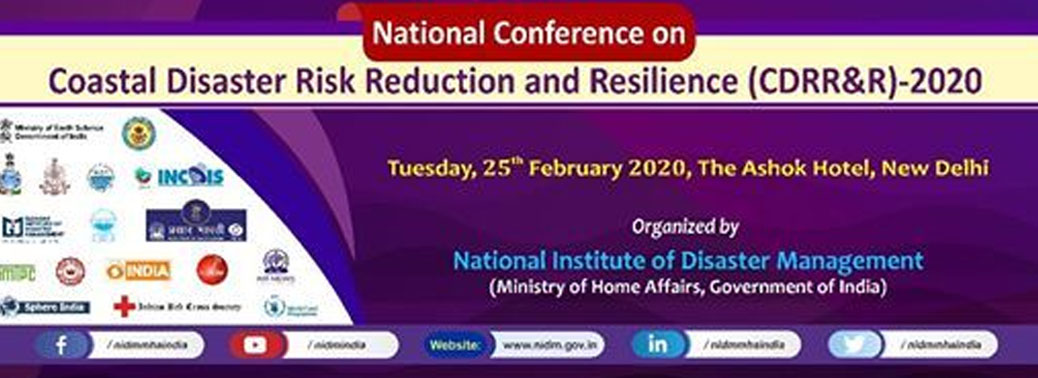
Why in News?
- Union Minister of State for Home Affairs presided over the valedictory session of the 1st ‘National Conference on Coastal Disaster Risk Reduction and Resilience (CDRR&R) – 2020’, organised by the National Institute of Disaster Management in New Delhi recently.
Highlights:
- The one-day conference focussed on enhancing human capacity in terms of better understanding about coastal disaster risks.
- It aimed at taking effective collaborative actions, by implementing Prime Minister’s 10-point agenda and Sendai Framework for Disaster Risk Reduction, for reducing the risk and enhancing the resilience amongst the affected stakeholders.
- It emphasised on dissemination of information related to national and local strategies for coastal disaster risk reduction and resilience.
Aim:
- To enhance the understanding of the issues and solutions on various facets for coastal disaster risk reduction and resilience.
- To explore and debate the most recent advances in the discipline.
- To develop a network mode roadmap for addressing the gaps by engaging with the institutions, researchers and experts.

Prime Minister’s 10-point Agenda:
The Prime Minister’s 10-point agenda on DRR is:
- All development sectors must imbibe the principles of disaster risk management.
- Work towards risk coverage for all– starting from poor households to SMEs to multi-national corporations to nation states.
- Encourage greater involvement and leadership of women in disaster risk management.
- Invest in risk mapping globally.
- Leverage technology to enhance the efficiency of our disaster risk management efforts.
- Develop a network of universities to work on disaster issues.
- Utilise the opportunities provided by social media and mobile technologies.
- Build on local capacity and initiative.
- Opportunity to learn from a disaster must not be wasted.
- Bring about greater cohesion in international response to disasters.
Sendai Framework for Disaster Risk Reduction 2015-2030:
- It is a global agreement to reduce and prevent disaster risks across the globe.
- It was adopted at the Third United Nations World Conference on Disaster Risk Reduction, in Sendai, Japan in March 2015.

- The non-legally binding agreement highlights the need for good governance in disaster risk reduction at the local, national, regional and global level.
- It aims to strengthen social and economic resilience to ease the negative effects of climate change, man-made disasters, and natural hazards.
- For the first time the goals are defined in terms of outcome-based targets instead of focusing on sets of activities and actions.
- It places governments at the centre of disaster risk reduction with the framework emphasizing the need to strengthen the disaster risk governance.
- It places almost equal importance on all kinds of disasters and not only on those arising from natural hazards.
- Implementation of integrated environmental and natural resource management approaches is needed for disaster reduction.
The Four Priorities for Action:
- Priority 1:Understanding Disaster risk management should be based on an understanding of disaster risk in all its dimensions of vulnerability, capacity, exposure, hazard characteristics and the environment.
- Priority 2:To manage Disaster risk governance at the national, regional and global levels.
- Priority 3:Investing in disaster risk reduction for resilience.
- Priority 4: Enhancing disaster preparedness for effective response and to build better in recovery, rehabilitation and reconstruction.
KERALA OPPOSES ALTERNATE ROUTE BYPASSING BANDIPUR
21, Feb 2020
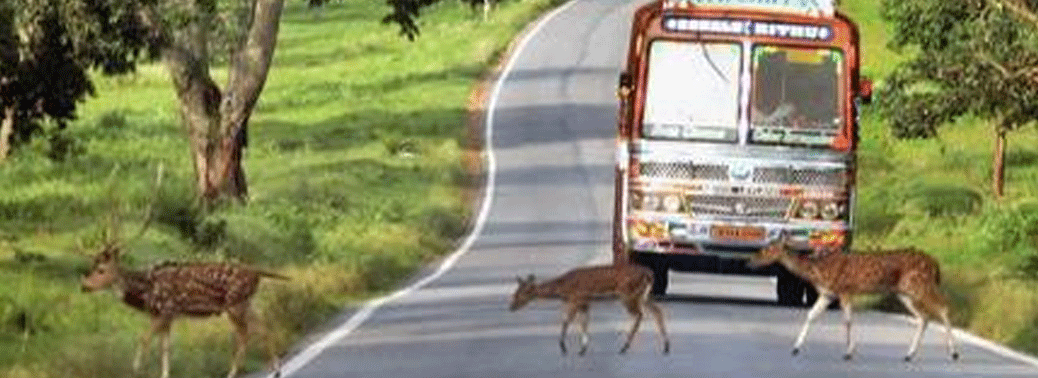
Why in News?
- The Kerala government has opposed in the Supreme Court an alternative route proposed by Karnataka to bypass the night-time traffic ban on the National Highway 212 through the Bandipur National Park.
Highlights:
- The Karnataka government had banned night time traffic through Bandipur National Park that connects Kerala with the cites of Mysore and Bangalore.
- Kerala submitted that the alternative route goes through the Nagarhole Tiger Reserve in Karnataka and Tholpetty wildlife sanctuary in Kerala.
- It said that the the ban on night traffic through NH 212 issued by the District Magistrate was without any study or preparation.
- Mudumalai, Bandipur Tiger Reserves and Wayanad Wildlife sanctuary make one contiguous tiger territory and tigers move freely within this area. It is illogical and inappropriate to impose enhanced level of restriction only in one part of this tiger territory to protect tigers.
- Kerala argued that, if at all any restrictions of vehicular movement is to be done in wildlife areas, it should be done uniformly across the country under the relevant laws such as the Wildlife Protection Act and not under the Motor Vehicles Act.
Bandipur National Park:
- Bandipur National Park established in 1974 as a tiger reserve under Project Tiger, is a national park located in Karnataka, which is the state with the second highest tiger population in India.
- Along with adjacent Nagarhole National Park it is one of the premier Tiger Reserves in the country. It was once a private hunting reserve for the Maharaja of the Kingdom of Mysore but has now been upgraded to Bandipur Tiger Reserve.
- Bandipur is known for its wildlife and has many types of biomes, but dry deciduous forest is dominant. It is a part of Nilgiri Biosphere Reserve.
- The park has a variety of biomes including dry deciduous forests, moist deciduous forests and shrublands. The wide range of habitats help support a diverse range of organisms. The park is flanked by the Kabini river in the north and the Moyar river in the south.
- The Nugu river runs through the park. The highest point in the park is on a hill called Himavad Gopalaswamy Betta.
FOREST FIRE PREVENTION AND MANAGEMENT
05, Feb 2020
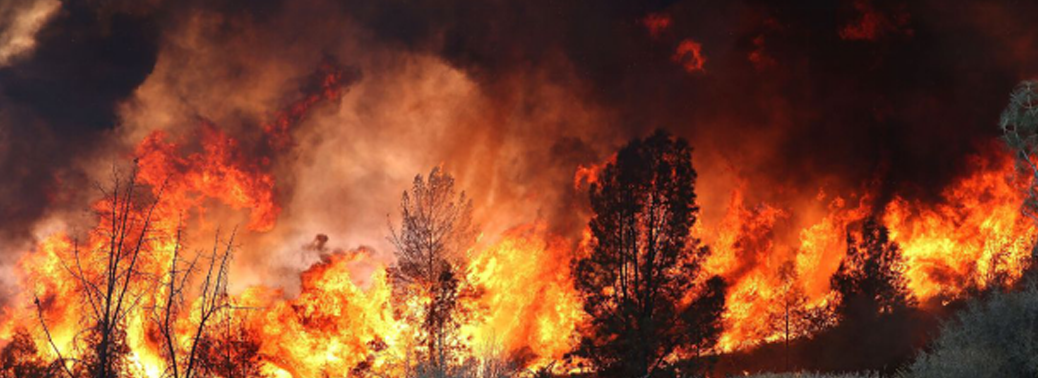
Why in News?
- Recently, the Minister of State for Environment, Forests and Climate Change (MoEFCC) has provided information about forest fires management and prevention during a reply in Budget Session 2020.
Key Points:
- In 2019, the area covering 93,273 hectares was affected by forest fires. It includes ‘ground fire’, i.e. burning of ground vegetation.
- While forestsare managed by states concerned, the MoEFCC provides forest fire prevention and management measures under the Centrally Sponsored Forest Fire Prevention and Management scheme.
- Forests are a subject in the concurrent list of the Seventh Scheduleof the Indian Constitution.
National Action Plan on Forest Fires (NAFF):
- The MoEFCC has prepared a NAFF in 2018, after consultation with all states and Union Territories.
- The objective of this planis to minimise forest fires by informing, enabling and empowering forest fringe communities and incentivising them to work in tandem with the State Forest Departments
- It also intends to substantially reduce the vulnerability of forests across diverse forest ecosystems in the country against fire hazards.
- It aims to enhance capabilities of forest personnel and institutions in Fighting Fires and swift recovery subsequent to Fire Incidents.
Forest Fire Prevention and Management (FFPM) Scheme:
- It is specifically dedicated to assist the states in dealing with Forest Fires.
- It replaced the Intensification of Forest Management Scheme (IFMS)in 2017. It has increased the amount dedicated for forest fire work.
- It allocates funds with 90:10to the Northeast and Western Himalayan regions and a 60:40 ratios for all other states.
- It provides the states to have the flexibility to direct a portion of the National Afforestation Programme (NAP) and Mission for Green India (GIM)funding toward forest fire work.
Prevention of Forest Fires can be done Through:
- Effective communication strategy for Awareness Generation:The strategy would identify most effective means for reaching out to different target groups like school campaigns, campaigns on Radio, TV, and social media, mobile campaigns during festival season, organization of music festivals, and setting up information portals, among others.
- Empowering Communities to deliver on their Responsibilities:Under the Forest Rights Act the forest areas recognized under community rights are mandated to be sustainably used by the right holding forest dweller community which places on them the responsibility of conservation of these areas.
- Capacity building of communities:The capacity of community organizations in prevention and control of forest fires should be enhanced by periodical training and capacity building programmes.
Environmental Clearance for Projects
11, Jan 2020
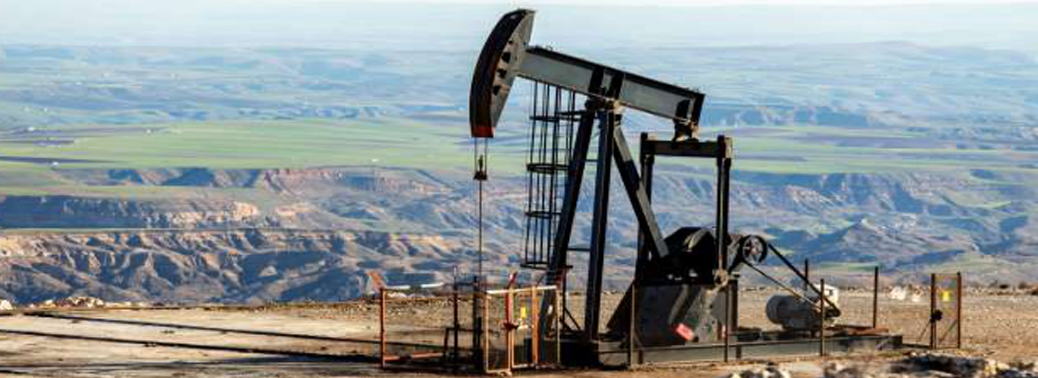
Why in News?
- The Supreme Court recently dismissed appeals by Kapico Kerala Resorts Private Limited, against a Kerala High Court decision banning the construction of resorts on Vembanad Lake in Alappuzha district of the State.
About Vembanad Lake:
- Vembanad Lake is also known as Vembanad Kayal, Vembanad Kol, Punnamada Lake (in Kuttanad) and Kochi Lake (in Kochi).
- Spanning several districts of Kerala and covering a territory of more than 2033.02 km2, it is the largest lake in Keralaand the longest Lake in India.
- It is separated from the Arabian Sea by a narrow barrier island and is a popular backwater stretch in Kerala.
- Vallam Kali (a.k.a Nehru Trophy Boat Race) is a Snake Boat Race held every year in the month of August in Vembanad Lake.
- In 2002 it was included in the list of wetlands of international importance, as defined by the Ramsar Convention.
- The Kumarakom Bird Sanctuaryis located on the east coast of the lake.
About Coastal Regulation Zone:
- Coastal stretches of seas, bays, estuaries, creeks, rivers, and backwaters were declared as CRZs under coastal zone regulation notification in 1991.
- CRZs have been classified into 4 zones for the purpose of regulation:
- CRZ-I: includes ecologically sensitive areas, where no construction is allowed except activities for atomic power plants, Defense.
- CRZ-II: includes designated urban areas that are substantially built up. Construction activities are allowed on the landward side only.
- CRZ-III: includes relatively undisturbed areas, mainly rural areas. No new construction of buildings allowed in this zone except repairing of the existing ones. However, constructions of dwelling units in the plot area lying between 200-500m of the high tide line are allowed.
- CRZ-IV: includes the water area covered between Low Tide Line and 12 nautical miles seaward. Except for fishing and related activities, all actions impugning on the sea and tidal water will be regulated in this zone.
Environmental Clearance:
- Environmental Clearance is conducted to assess the impact of the planned project on the environment and people and to try to reduce the impact of the same.
- Currently in our country the environmental clearance process is carried out for 39 types of projects.
- In India the National Green Tribunal (NGT) has been established under the National Green Tribunal Act for effective disposal of cases regarding environmental protection and forest conservation.
- The tribunal was set up to control emissions and maintains the optimum level.
How Environmental Clearance is done?
- Environmental clearance is granted by the ministry of environment, and the State Environment Impact Assessment Authority (SEIAA), under the Environment Impact Assessment (EIA) notification of 2006.
- This notification details the process for granting EC.
- It includes the structure of the EIA report, process of appraisal, and the conditions and safeguards that a company has to implement, including what the environment management plan should be.
- The appraisal is carried out by the Expert Appraisal Committees (EACs), which largely comprise of ‘professionals and experts’. The appraisal procedure clearly states, ‘in case the project or activity is recommended for grant of EC, then the minutes shall clearly list out the specific environmental safeguards and conditions.
- EIA Notification 2006 was issued under the sub-rule (3) of Rule 5 of the Environment (Protection) Rules, 1986. This rule gives powers to the central government to impose certain restrictions and prohibitions on the location of an industry, or the carrying out of processes and operations in an area, based on their potential Environmental Impacts.
What are the Drawbacks?
- EC process in India involves a lot of paperwork with nothing to show on the ground.
- Almost every project is cleared by EACs which consist of people not accountable to anyone.
- There is hardly any post-clearance monitoring. Hence, non-compliance of the safeguards and conditions is rampant.
- Projects are granted EC after they have already come up.
- Primary goal of the EC process is to ensure that projects are located and constructed in such a manner that they have the least possible impact on the environment. Unfortunately, the governments could not uphold this focus
- The present clearance process with its sequential hurdles either forces a project proponent to give up the venture, as was reportedly the case with major road projects of late, or burdens the project with time and cost overruns.
Way Forward:
- These are Few Recommendations given by the CAG:
- EC letters should clearly mention cost of activities under the Environmental Management Plan along with the timelines for their implementation.
- The capital and revenue expenditure amount to be spent on CSR cost should be distinctly specified in the EC letter.
- EC conditions should be more specific for the area to be developed under green belt and species is to be planted in consultation with forest/agriculture department along with post EC third party evaluation.
- While prescribing the conditions of environment clearance, the details about installation of monitoring stations and frequency of monitoring of various environment parameters in respect of air, surface water, ground water, noise, etc. should be clearly mentioned.
- It also said that the conditions of environment clearance should be compatible with the nature and type of project in order to avoid non-uniformity in similar kinds of projects.
MIYAWAKI METHOD-AFFORESTATION
06, Jan 2020
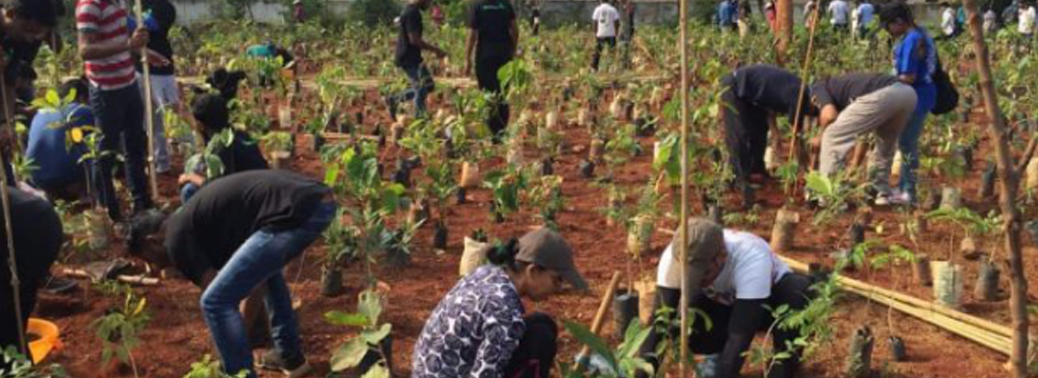
Why in News?
- Recently, Kerala Government has initiated Miyawaki method of afforestation to add green cover..
About Miyawaki method:
- It is pioneered by Akira Miyawaki, Japanese botanist. He is an expert in the field of Natural forest and restoration.
- Native Forest Plan to improve
- Annual Plants on a barren land which has a life cycle for one year are succeed by grass, shrubs, trees and forest. The climax vegetation will be formed only after 2 years.
1.Environment Protection
2.Water Retention Resources
3.Protect against natural hazards
About ‘Native for by Native trees’ method:
- It was first applied in Japan by Akira Miyawaki.
- He chooses native trees after testing surface where it obtains its nourishment.
- He created nursery, were the plants were mixed and planted them on site.
About Plantation of Trees:
- This method uses dense plantation with in a small area, to stir competition between species.
- It also helps in eliminate the need for pesticides and insecticides.
- Generally, plantation method we could have about 400 plants per acre but in Miyawaki method around 10,000 plants per acre can be planted.
- BY doing dense plantation there will be a Phytosociological relation.

About Steps Involved in This Method:
- It involves the surveying the potential Natural Vegetation of the area which is to be afforested.
- The top soil is recovered up to depth of 20 -30 cm by mixing the soil and compost (it is prepared from organic material), which helps in reducing the soil evolution period.
- The Choice of tree species to restore multilayer natural forest or quasi natural forest. It involves mixing to intermediate species and late successional species and densely planted with as many companions as possible.
- The soil between the plants are mulched (it is a practice of covering the soil with organic materials like straw, grass etc). It is used to protect soil erosion on slopes, prevent weed growth and to protect seedlings against cold.
- It is mentioned that multilayer natural forest can be built in 15-20 years in Japan and 45-50 years in South East Asia. The successful countries using this method are Japan, Malaysia, South East Asia, Brazil, chile and china.
Significance of the Method:
- It involves Quick Environmental Restoration of strongly degraded areas.
- It gives rich, dense and efficient protective pioneer forest in 20-30 years.
- The soil is rich in microbial activity, which leads to quick production of multi-layer forest. It helps in increasing green cover in urban areas by effective utilization of land.
- It is used to mitigate the effects of Tsunami, that is the trees more resilient to storms and high-velocity winds.
OVERALL GREEN COVER RISES, NORTHEAST FACES A DIP
31, Dec 2019

Why in News?
- The India State of Forest Report (ISFR) has been released recently by the Ministry of Environment, Forest and Climate Change.
About the Report:
- India State of Forest Report (ISFR) 2019 is a biennial publication of Forest Survey of India (FSI), an organisation under the Ministry of Environment, Forest and Climate Change, Government of India engaged in the assessment of country’s forest resources.
- The first report was brought out in 1987. Since then FSI has published 15 reports while 2019 report is the 16threport in the series.
- The report provides state/district wise forest cover of the country and changes thereon with respect to the previous assessment.
- It also provides the estimates of growing stock within and outside the forest areas, forest cover in the hill, tribal and north eastern states, carbon and other important aspects such as tree, bamboo and mangrove cover.
Classification of Forests:
- The forest cover is broadly classified in 4 classes, namely very dense forest, moderately dense forest, open forest and mangrove.
- The classification of the cover into dense and open forests is based on internationally adopted norms of classification.
- It has not been possible to further segregate the dense forest into more classes owing to enormity of work of ground validation and limitations of methodology. Mangroves have been separately classified because of their characteristic tone and texture and unique ecological functions.
- The other Classes Include Scrub and non-forest. These classes are defined is below:
- Very Dense Forest– All Lands with tree cover (Including mangrove cover) of canopy density of 70% and above
- Mod Dense forest– All lands with tree cover (Including mangrove cover) of canopy density between 40% and 70% above
- Open Forest– All lands with tree cover (Including mangrove cover) of canopy density between 10% and 40%
- Scrub– All forest lands with poor tree growth mainly of small or stunted trees having canopy density less than 10 percent
- Non Forest– Any area not included in the above classes.
Key Findings of the Report:
- The total forest cover of the country is 7, 12,249 sq km which is 21.67% of the geographical area of the country.

- The tree cover of the country is estimated as 95,027 sq km which is 2.89% of the geographical area.
- The total Forest and Tree cover of the country is 8, 07,276 sq km which is 24.56% of the geographical area of the country.
- The current assessment shows an increase of 3,976 sq km (0.56%) of forest cover, 1,212 sq km (1.29%) of tree cover and 5,188 sq km (0.65%) of forest and tree cover put together, at the national level as compared to the previous assessment i.e. ISFR 2017.
- Forest cover within the Recorded Forest Area/Green Wash (RFA/GW) has shown a slight decrease of 330 sq km (0.05%) whereas there is an increase of 4,306 sq km of forest cover outside the RFA/GW as compared to previous assessment of 2017.
- The top five Statesin terms of increase in forest cover are Karnataka (1,025 sq km), Andhra Pradesh (990 sq km), Kerala (823 sq km), Jammu & Kashmir (371 sq km) and Himachal Pradesh (334 sq km).
- Forest cover in the hill districts of the country is 2, 84,006 sq km, which is 40.30% of the total geographical area of these districts. The current assessment shows an increase of 544 sq km (0.19%) in 140 hill districts of the country.
- The total forest cover in the tribal districts is 4, 22,351 sq km, which is 37.54% of the geographical area of these districts. The current assessment shows a decrease of 741 sq km of forest cover within the RFA/GW in the tribal districts and an increase of 1,922 sq km outside.
- Total forest cover in the North Eastern region is 1, 70,541 sq km, which is 65.05% of its geographical area. The current assessment shows a decrease of forest cover to the extent of 765 sq km (0.45%) in the region. Except Assam and Tripura, all the States in the region show decrease in forest cover.
- Mangrove cover in the country has increased by 54 sq km (1.10%) as compared to the previous assessment.
- The total growing stock of wood in the country is estimated 5,915.76 million cum comprising 4,273.47 million cum inside forest areas and 1,642.29 million cum outside recorded forest areas (TOF). The average growing stock per hectare in forest has been estimated as 55.69 cum.
- Total bamboo bearing area of the country is estimated as 1, 60,037 sq km. There is an increase of 3,229 sq km in bamboo bearing area as compared to the estimate of ISFR 2017.
- In the present assessment, total carbon stock in forest is estimated as 7,124.6 million tonnes. There is an increase of 42.6 million tonnes in the carbon stock of the country as compared to the last assessment of 2017. The annual increase is 21.3 million tonnes, which is 78.1 million tonnes CO2 eq.
- Soil Organic Carbon (SOC) represents the largest pool of carbon stock in forests, which has been estimated 4,004 million tonnes. The SOC contributes 56% to the total forest carbon stock of the country.
- There are 62,466 wetlands covering 3.83% of the area within the RFA/GW of the country. The total number of wetlands located within the RFA/GW is 8.13%. Amongst the States, Gujarat has largest area of wetlands within RFA in the country followed by West Bengal.
- Dependence of fuel wood on forests is highest in the State of Maharashtra, whereas, for fodder, small timber and bamboo, dependence is highest in Madhya Pradesh. It has been assessed that the annual removal of the small timber by the people living in forest fringe villages is nearly 7% of the average annual yield of forests in the country.
- The information on area affected by five major invasive species in States/UTs based on analysis of NFI data has been given in the present ISFR.
- Fire prone forest areas of different severity classes have been mapped in the grids of 5km x 5km based on the frequency of forest fires. The analysis reveals that 21.40% of the forest cover of the country is highly to extremely fire prone.
CENTRE OBJECTS TO UTTARAKHAND’S DEFINITION OF FOREST
07, Dec 2019

Why in News?
- The Union Ministry for Environment and Forests Climate Change (MoEFCC) has objected to an Uttarakhand government’s notification defining the term ‘forest’.
Definition of Forests:
- The freedom to define land, not already classified as forests by the Centre or State records, as forest has been the prerogative of the States since 1996 and stems from a Supreme Court order, called the Godavarman judgment.
- The Supreme Court judgment expanded the definition of forest to include lands that were already notified by the Centre as forests that appear in government records as forests as well as those that fell in the “dictionary definition” of forest.
- The latter clause allows the States to evolve their own criteria and define tracts of land as forest, and these would then be bound by forest conservation laws.
- An all-encompassing definition of forest is difficult for India because the country has 16 different kinds of forest.
- A tract of grassland in one State might qualify in one region as forest, but not in another. However, once a State applied criteria, it couldn’t be reversed.
- The onus on the States to define forests is also significant because the States often claim that they are helpless in preventing encroachment because a patch of land in question hadn’t been notified as forest.
What are Deemed Forests?
- The SC, in a Dec 12, 1996 judgement, had broadened the definition of forest to include not just land classified as forest under forest or revenue departments, but also those that are forests according to the definition of a forest.
- It had then also asked states to form committees to identify forests, irrespective of the nature of land ownership or whether they are notified, recognised or classified in a time-bound manner.
- There are forests that are notified either with the forest department or revenue department.
- Then there are those areas that are like forests but are neither recorded, nor notified. The Supreme Court had ordered that the states identify and classify these as deemed forests.
- Deemed forests are already a legal category of forests in some states and they are not defined according to the Dictionary Definition.
Classification of Forests:
- The forest cover is broadly classified in 4 classes, namely very dense forest, moderately dense forest, open forest and mangrove.
- The classification of the cover into dense and open forests is based on internationally adopted norms of classification. It has not been possible to further segregate the dense forest into more classes owing to enormity of work of ground validation and limitations of methodology. Mangroves have been separately classified because of their characteristic tone and texture and unique ecological functions.
- The other Classes Include Scrub and non-forest. These classes are defined is below.
- Very Dense Forest – All Lands with tree cover (Including mangrove cover) of canopy density of 70% and above
- Mod Dense forest – All lands with tree cover (Including mangrove cover) of canopy density between 40% and 70% above
- Open Forest – All lands with tree cover (Including mangrove cover) of canopy density between 10% and 40%
- Scrub – All forest lands with poor tree growth mainly of small or stunted trees having canopy density less than 10 percent
- Non Forest – Any area not included in the above classes.
What is the Issue?
- In a notification on November 21, the Uttarakhand government said that in areas recorded as “deemed forest”, only tracts 10 hectares and more, and having a canopy density of greater than 60%, would be considered as forests.
- Land already registered as ‘reserved’ and ‘protected’ forests would be out of the remit of this definition.
- However, land recorded in government records as ‘revenue’ land could potentially be influenced by this definition of Deemed Forest.
- The Uttarakhand order was in “contravention” of the Supreme Court’s orders. The Forest (Conservation) Act, 1980 would be applicable to all areas recorded as forest in any government records….the State should not issue any communication that is violative of any order passed by the Supreme Court.
- Deemed forests, which comprise about 1% of India’s forest land, are a controversial subject as they refer to land tracts that appear to be a “forest”, but have not been notified so by the government or in historical records.
- Uttarakhand’s criteria may pave the way for large parts of forestland to be captured by builders and industrialists.
- It is to be noted that before 1972, Forest and Wildlife came under State list. In 1976, 42nd Constitutional Amendment Act Forests were brought under Concurrent List, this means that both the state and Centre can make Laws on the subject but in case of a difference, the law of centre would prevail.
NGT ISSUES ULTIMATUM TO BAN CERTAIN RO SYSTEMS
07, Nov 2019

Why in News?
- The National Green Tribunal (NGT) has given an ultimatum to the Union Environment Ministry to issue notifications pertaining to prohibition on the use of RO (reverse osmosis) systems, which result in wastage of almost 80% of water.
Background:
- The NGT has passed an order this year (May 2019) to Environment Ministry to issue notifications pertaining to prohibition on the use of RO systems. But the ministry is not in compliance of the above order till now.
- NGT has noted that delay in compliance of order is causing harm to public health and environment in terms of an expert committee report to which the environment ministry is also a party.
About NGT’s Order:
- The notification should be based on the following directions as issued by NGT:
- 1. Wherever RO is to be permitted, condition of recovery of water to the extent of more than 60% is required.
- 2. Prohibiting the use of RO where Total Dissolved Solids in water is less than 500 mg/l.
- 3. Use of RO reject water for purposes such as utensil washing, flushing, gardening, cleaning of vehicles and mopping.
- NGT has also observed that, since issuing notification is a policy related matter which comprises of features of multi-dimensional character, a region wise detailed consultation should also be conducted before notification.
What is Reverse Osmosis (RO)?
- It is a water purification process that uses a partially permeable membrane to remove ions, unwanted molecules and larger particles from drinking water.
- In reverse osmosis, an applied pressure is used to overcome osmotic pressure, a colligative property, that is driven by chemical potential differences of the solvent, a thermodynamic parameter.
- Reverse osmosis can remove many types of dissolved and suspended chemical species as well as biological ones (principally bacteria) from water, and is used in both industrial processes and the production of potable water.
About NGT:
- The NGT was established in 2010 under the National Green Tribunal Act
- It is a specialized environmental court that deals with cases relating to environmental protection and the conservation of forests
- It has judicial powers that allow it to exclusively decide civil environmental matters.
- The tribunal is guided by principles of natural justice and is not bound by the mainstream code of civil procedure.
- The NGT has five places of sittings, New Delhi is the Principal place of sitting and Bhopal, Pune, Kolkata and Chennai are the other four.
RADIOACTIVE CESIUM TECHNOLOGY FOR MEASURING SOIL EROSION
27, Sep 2019
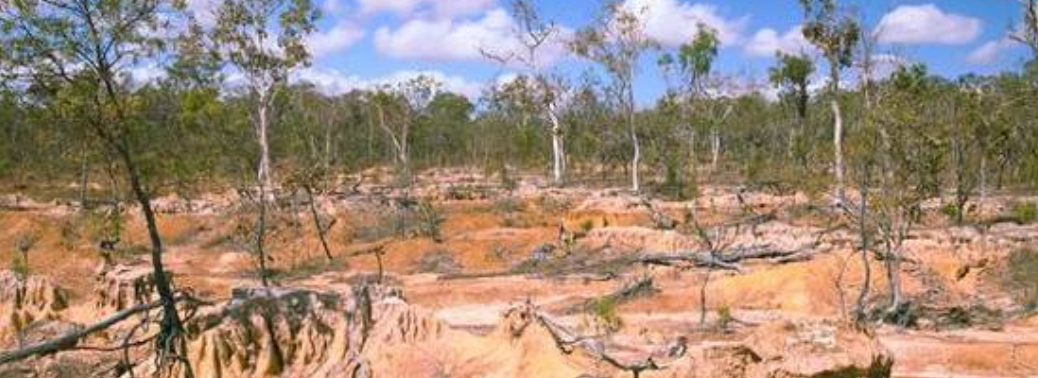
Why in News?
- Indian scientists have now developed a method to measure the rate of soil erosion and associated decrease in organic content in soil by assessing levels of radioactive cesium in soil.
Radioactive Cesium Technology:
- Researchers at the ICAR-Indian Institute of Soil and Water Conservation, Dehradun have developed a way to monitor soil erosion and decrease in carbon content in soil by relating it with levels of radioactive cesium in soil.
- Carbon concentration is soil correlates with levels of isotope of cesium.
- Different sites were found to have varying levels of cesium pointing at different degrees of soil degradation in different sites.
- By applying various formulas, the cesium loss was then used to calculate erosion and associated carbon loss in soil.
- For measuring cesium levels in soil, gamma spectroscopy technique was used.
Significance:
- Radioactive cesium technology is a more rapid and less expensive method for soil erosion studies in the severely intensive croplands.
- It gives more accurate results for all types of erosion studies including historic, comparative and long-term soil and soil organic carbon erosion.
- This method can help in monitoring the effects of soil erosion and effectiveness of soil conservation strategies.
Why Monitor Soil Erosion?
- Soil supports plants, insects and microbial life and is formed by natural forces over a long period of time.
- Carbon reaches soil through the microbial action on withering plant parts and remains in soil, changing its physio-chemical properties and also enhancing its fertility.
- This way soil also sequesters carbon helping in regulating carbon levels in the atmosphere.
- Soil erosion, which involves disaggregation and displacement of soil, leads to decrease in its organic content and eventually its fertility.
- Natural and human activities are contributing to soil erosion and posing problems for both food production and climate change.
- Therefore, monitoring of soil erosion induced-carbon loss from soil is important.
DRAFT NATIONAL RESOURCE EFFICIENCY POLICY
26, Sep 2019

Context:
- Driven by serious sustainability concern, the Ministry of Environment, Forests and Climate Change has proposed a draft National Resource Efficiency Policy 2019 which aims to streamline the efficient use of these resources with minimum negative impact on environment.
Background:
- The draft policy comes in the backdrop of India’s growth story as one of the fastest growing economies of the world with an estimated $2.6 trillion GDP, which has increased its material consumption to six times from 1.8 billion ton in 1970 to 7 billion ton in 2015.
- The policy was aiming to double the recycling rate of key materials to 50% in the next five years and enable upcycling of waste.
Key Features of the Policy:
- National Resource Efficiency Authority (NREA): The policy aims to set up a National Resource Efficiency Authority (NREA) with a core working group and a members group with representations from different ministries, state/union territory, and other stakeholders.
- Inter-Ministerial National Resource Efficiency Board: The authority would be supported by an Inter-Ministerial National Resource Efficiency Board to guide on the aspects critical to its implementation.
- Monetary Incentives: It also plans to offer tax benefits on recycled materials, green loans to small and medium Enterprises (SMEs) and soft loans to construct waste disposal facilities, apart from setting up Material Recovery Facilities (MRF).
- Shared responsibility of Stakeholders: Manufacturers and service providers would also be required to use more recycled or renewable materials and awareness would be created among consumers to indicate the shift.
- National Policy on Circular Economy: Idea of the national policy is to drive the country towards circular economy through efficient use of available material resources, based on principle of 6R and ‘green public procurement’.
- ‘Zero landfill’ Approach: It also pitches for moving towards ‘zero landfill’ approach in the country, hinting at possibility of imposing ‘landfill taxes’ and ‘high tipping fees’ for bulk generators of waste so that they can move towards optimal use of materials and better waste management.
- The 6R stands for reduce, reuse, recycle, redesign, re-manufacture and refurbish while the very premise of ‘green public procurement’ is to procure products with lower environmental footprints such as secondary raw materials and locally sourced materials.
What do you mean by “Resource Efficiency”?
- In the above context, Resource efficiency means using the Earth’s limited resources in a sustainable manner while minimising impacts on the environment. It allows us to create more with less and to deliver greater value with less input.
- To put it more simply, Resource efficiency is making more with fewer materials.
Fore coming Challenges before India:
- India’s recycling rate is just 20-25% compared with 70% in developing countries in Europe. The situation will only aggravate as India is likely to double its material consumption by 2030.
- India’s resource extraction of 1580 tonnes/acre is much higher than the world average of 450 tonnes/acre, while material productivity remains low.
- Increased import dependency on majority of the key resources like-cobalt, copper and lithium that find extensive application in high-end technology industry is almost 100%.
- India imports almost 80% of crude oil along with 85% of its coking coal demand. Extraction of non-metallic minerals is not without embattling challenges.
- To add to the misery there has been massive soil degradation, with 147 million hectares (Mha) of a total of 329 Mha land area have been widely hit.
- Water is fast becoming scarce while deteriorating air quality has emerged as a major threat to human life. With nearly 50 per cent of India grappling with drought-like conditions, the situation has been becoming grim with unpredictable rainfall.
HIMALAYAN CONCLAVE
28, Jul 2019
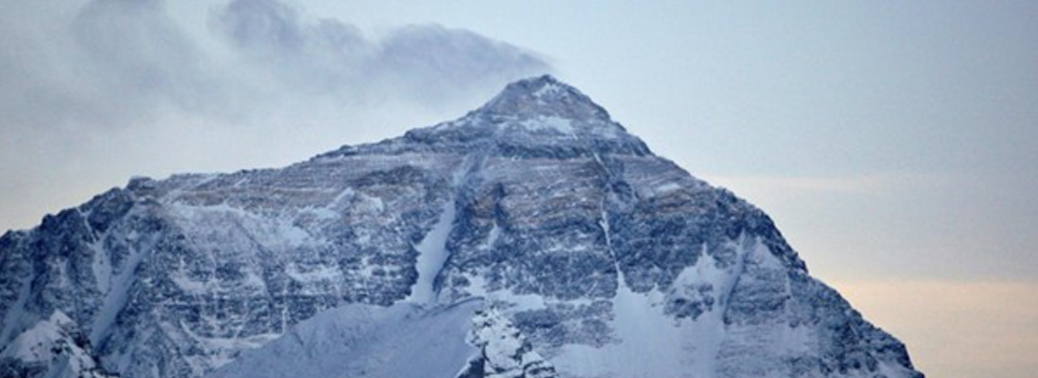
Context– Himalayan Conclave is being held in Mussoorie, Uttarakhand
Objective
- The objective is to discuss various issues related to the development of Himalayan States.
- The main agenda for the conclave are conservation of Himalayan ecology, bio-diversity and cultural heritage and water conservation, with focus on conserving rivers, glaciers, lakes and water bodies besides reviving water resources which have dried up over the years.
Related Schemes:
National Mission for sustaining the Himalayan ecosystem:
- The National Mission for Sustaining the Himalayan Ecosystem (NMSHE) is one of the eight missions under the National Action Plan on Climate Change (NAPCC).
- NMSHE is a multi-pronged, cross-cutting mission across various sectors.
- It contributes to the sustainable development of the country by enhancing the understanding of climate change, its likely impacts and adaptation actions required for the Himalayas- a region on which a significant proportion of India’s population depends for sustenance.
Asean Vows to Tackle Plastic Waste
23, Jun 2019
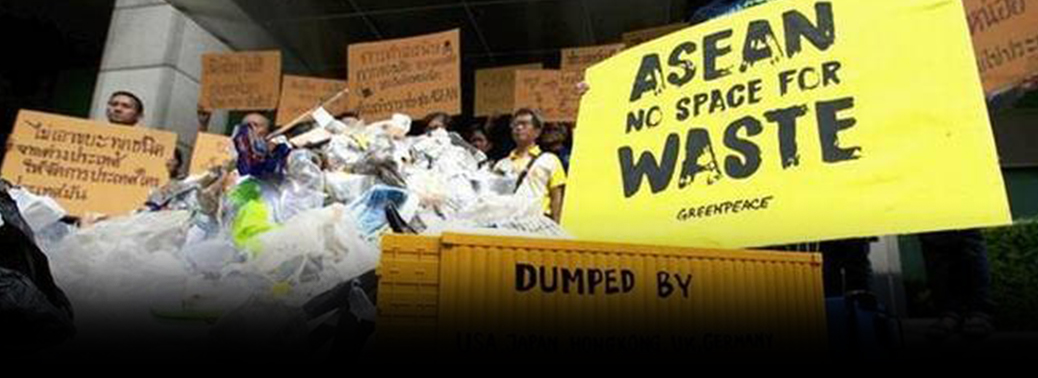
- It is learned that five countries viz; China, Indonesia, Philippines, Vietnam, and Thailand dump more than half of the eight million tonnes of plastic waste that end up in oceans every year.
- This was reported by the Ocean Conservancy report.
What is Ocean Conservancy Report?
- It is an international NGO that strives to keep the oceans clean. Founded in 1972.
- Their first initiative was the Whale Protection Fund, which focused on saving whales and protesting commercial whaling by Russia and Japan.
- Ocean Conservancy seeks solutions for a healthy ocean and the wildlife and communities that depend on it.
Bangkok Declaration 2019:
- ASEAN leaders are expected to sign the declararion on fighting the marine waste – to prevent and significantly reduce marine debris.
- The agreement does not impose penalities on countries or companies which fail to specify measures to tackle the problem.
- It does not mention anything on single use plastics which are more harmful for the nature.
What are single Use Plastics?
- Single-use plastics, often also referred to as disposable plastics, are commonly used for plastic packaging7 and include items intended to be used only once before they are thrown away or recycled.
- These include, among other items, grocery bags, food packaging, bottles, straws, containers, cups and cutlery.
Other issue with Plastic Waste:
These Southeast Asian nations are the world’s top importers of trash from developed countries like the U.S and Canada.
These wastes often end up in landfills and waterways without being properly processed.
REN21’S Renewable 2019 Global Status Report
19, Jun 2019
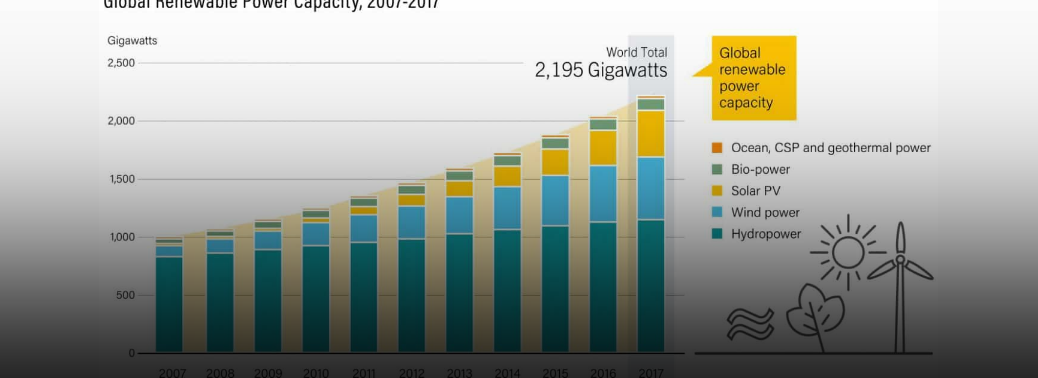
Why in News?
- The REN21’s Renewable 2019 Global Status Report (GSR) was recently released.
Global prospects of the Report:
- Renewables now supply around 26 per cent of global electricity production but the transport, cooling and heating sectors lag far behind in renewable adoption.
- Underlining the subsidy support being given to fossil fuel, the GSR read that lack of political will and fossil fuel subsidies are threatening to derail the crucial UN 2030 Climate and Development Goals.
- Renewable energy’s share in power consumption is increasing undoubtedly, but people would have consumed more had policy makers prioritized the sector. Erratic policy decisions kept the world from using the sector to its potential in meeting climate change targets, added the report.
Indian Case:
- India ranked fourth globally for new investment in renewable energy in 2018.
- India’s new power generation capacity from solar photovoltaic panels decreased compared to 2017, according to the report.
- However, India placed fifth, overtaking Italy, with 33 gigawatts (GW) total installed capacity. The report confirmed that installed renewable power capacity was more than that of fossil fuel and nuclear power combined for the fourth consecutive year.
- Around 100 GW of solar PV were added in 2018 which is enough to meet more than 25 per cent of electricity demand in France.
Decrease in Investments:
- Lack of ambitious and sustained policies to drive decarburizing in heating, cooling and transport sectors indicates that countries are not trying to maximise the benefit of energy transition.
- The investment has decreased 16 per cent compared to 2017. It attributes this to factors like:
-
- Land and transmission constraints,
- 25 per cent safeguard duty on imports from China and Malaysia
- Flaws in tender scheme
- Tax uncertainties
Joint Monitoring Programme (JMP) report by UN Organisations
19, Jun 2019
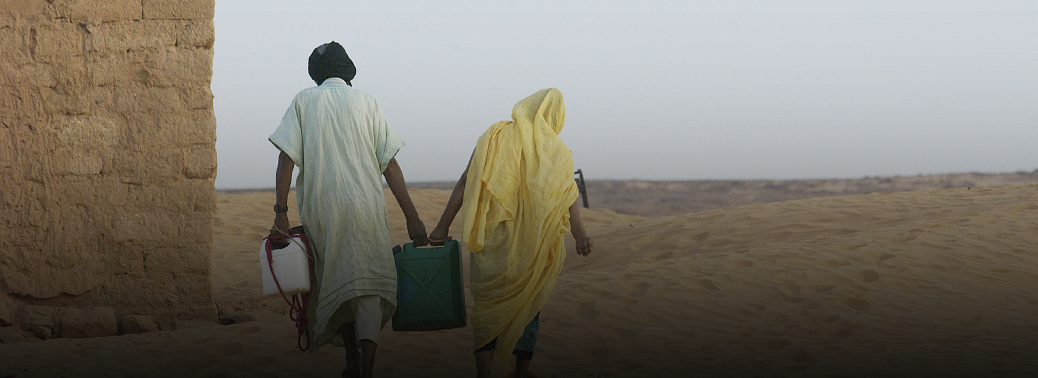
- Almost 2/3rd of the global population which stopped defecating openly between 2000 and 2017 has been from India.
- However there has been no growth in the population with access to piped water facilities. Large inequalities remain between urban and rural areas.
- Increase in population (with access to protected drinking water facilities within 30 metres) from 79% in 2000 to 93% in 2017.
- In rural India only 32% have access to piped water, in urban areas it is 68%.
- The South Asian region, accounted for almost three-fourths of the population who stopped defecating in open between 2000 and 2017.
- Only 30% of the country’s wastewater is treated at plants, in comparison to 80% global average.
What is JMP?
- The Joint WHO/UNICEF Joint Monitoring Programme is affiliated to UN- Water and was Established in 1990.
- The JMP’s objectives are to provide regular global reports on drinking-water and sanitation coverage to facilitate sector planning and management, to support countries in their efforts to improve their monitoring systems, and to provide information for advocacy.
- For the Sustainable Development Goals, the JMP uses its 25 years of experience, and focuses on drinking water, sanitation and hygiene. The Joint Monitoring Programme report, Progress on drinking water, sanitation and hygiene: 2017 update and Sustainable Development Goal baselines, presents the first global assessment of “safely managed” drinking water and sanitation services. JMP is part of the UN-Water Integrated Monitoring Initiative for SDG 6, reporting on progress towards SDG targets 6.1 and 6.2.
CAN INDIA’S CITIES ACCOMMODATE CLIMATE MIGRANTS?
12, Jun 2019

Why in News:
- In India, evidence about climate migration is less although the number of climate migrants could be high, given the recent events of frequent floods and droughts.
Climate Migrant:
- The term ‘climate migrants’ is used to refer to people displaced due to climate change
impacts such as sea level rise, floods and droughts - Increased sea level rise in the inhabited islands of the Sundarbans, drought in central India and extreme floods in the Ganges and Brahmaputra basins are already displacing people.
More in News:
- The National Sample Survey Office (NSSO) in its 61st round in 2004-05, estimated that the population of urban poor increased by 34.4 per cent from 1973 to 2004. But the increase in urban poor due to climate change impacts, though not accurately measured, has been far less.
- The 64th round of NSSO, in 2007-08, titled Migration in India identified natural disasters including floods and droughts as one of the major reasons for migration, but the figures were as low as 13 per 1,000 migrant households reporting natural disasters as the reason for migration.
- The Census 2011 shows that less than 20 per cent of India’s population growth was due to
rural-urban migration.
Climate Migrants and Cities:
- It is a common notion that climate migrants could lead to an increase in the number of urban poor and add to urban development challenges.
- Even a marginal rise in climate migrants to cities could be an urban development challenge because Cities don’t have adequate infrastructure to host migrants: According to the Census 2011 report, the infrastructure gaps in cities were poor. Less than 70.6 per cent of urban households were covered by individual connections of water supply and over 17 per cent of the urban population lived in slums.
- With the lack of adequate infrastructure in cities, migrants are likely to end up living in crowded temporary shelters with low access to drinking water, sanitation and health care facilities.
- The migrants are unlikely to have the required skills to work in urban areas: The high- powered expert committee report on urban infrastructure in 2011 observed industrialisation in urban areas has been capital intensive and the services boom fuelled by the knowledge economy has also been skill intensive.
- In such an urbanisation pattern, there can be little scope for finding employment in urban areas for climate migrants if they are displaced by extreme events in future.
- With a lack of skills, the only possibility of employment for climate migrants would be as unskilled labourers in the construction and manufacturing industries.
Solution:
- Cities need to recognise migration as a challenge, particularly of those displaced due to climate change and other natural disasters in the future and have appropriate urban development policies and programmes to accommodate them. It is important for cities to recognise that migration is not necessarily a burden and could contribute to labour in industry and the manufacturing sector, adding to the local economy while providing a livelihood option to climate migrants. Providing low-cost housing and skill development for migrants would be of high importance.
ALL YOU NEED TO KNOW ABOUT TRAFFIC INDEX 2018
11, Jun 2019

Why in News:
- A recent study has ranked Mumbai as the most traffic-congested city in the world for the second straight year, and Delhi at fourth place.
Traffic Index 2018
- Traffic Index 2018 is published by TomTom, an Amsterdam-based company that offers traffic solutions, uses location technology to collect traffic information, and has been publishing city rankings for eight years.
- The latest index ranks 403 cities across 56 countries, including 13 new cities.
- For this study, congestion has been defined in terms of the additional time taken to reach a destination as opposed to when the road would have been clear of traffic.
- Mumbai’s 2018 congestion level of 65%, therefore, means that the extra travel time is 65% more than an average trip would take during uncongested conditions.
- For Delhi, by the same yardstick, the extra travel time is 58% more.
- TomTom states that it factors for peak hours, accidents, inclement weather, construction work and all other factors likely to cause disruptions. It adds that its statistics are “calculated using GPA data from navigation devices, in-dash systems and smartphones”.
More in News:
- Globally, traffic congestion is rising.
- It is both good, and bad, news. It’s good because it indicates a strong global economy, but the flip side is drivers wasting time sitting in traffic, not to mention the huge environmental impact. Nearly 75% of the cities part of the 2018 index had increased or stable congestion levels between 2017 and 2018, with only 90 cities showing measurable
decreases, states the report. Globally, Christmas Day resulted in the least traffic congestion. Drivers in Tel Aviv and Istanbul stood to save the most time by avoiding driving during morning and evening rush hours. In Delhi and Mumbai, traffic congestion during morning and evening peak hours varies between 73% and 102%. - The index found that traffic flows most freely between 2 am and 5 am in both cities.
AVIATION SECTOR FACES HEAT OVER WARMING
10, Jun 2019
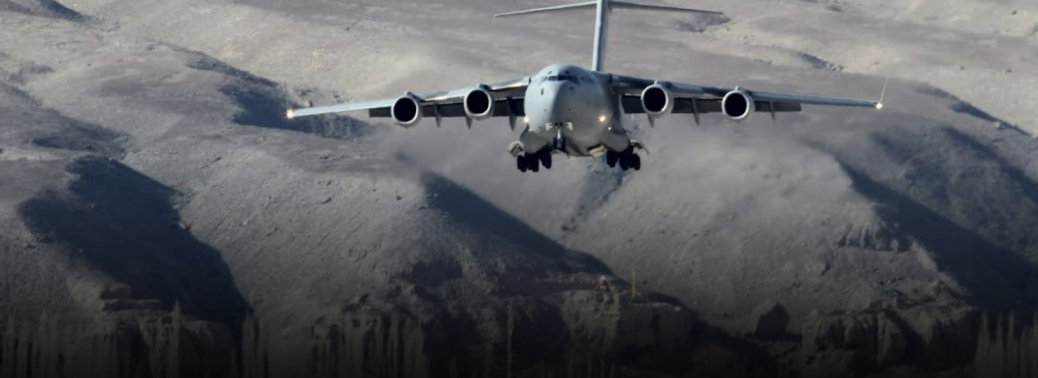
Why in News:
- Under pressure from frequent flyers alarmed over climate change, the airline industry says it is “hellbent” on reducing emissions — but the technology needed to drastically reduce its carbon footprint is still out of reach.
Background:
- Climate change is here and affecting our health, with extreme heat in particular also having effects on productivity, food supply and disease transmission, a new global report finds. According to Indian Meteorological Department, Heat wave is considered if maximum temperature of a station reaches at least 40°C or more for Plains, 37°C or more for coastal stations and at least 30°C or more for Hilly regions.
- Socio-economic Impact of Climate Change
- Since 1990, every region of the globe has become steadily more vulnerable to extreme increases of heat. Increased exposure to heat can cause
- A. A decrease in labour output
- B. Burden health systems ill-equipped to cope with the effects of heat stress
- C. Promote the spread of diseases like cholera and dengue fever across endemic areas.
- Climate change threatens to undermine the public health gains of previous decades.
- With each additional tonne of carbon dioxide emitted costs India $86 — almost double the expense borne by the USA ($48) and Saudi Arabia ($47), according to a study. IPCC warned that if the global community are not able to limit a temperature rise to 1.5 degrees,
climate-related risks to livelihoods, food security, health, water supply and human security will further intensify.
Way Forward:
- Advance implementation of local Heat Action Plans, plus effective inter-agency coordination is a vital response which the government can deploy in order to protect vulnerable groups.
- This will require identification of “heat hot spots”, analysis of meteorological data and
allocation of resources to crisis-prone areas. - Ahmedabad Municipal Corporation (AMC) has adopted a heat action plan which necessitates measures such as building heat shelters, ensuring availability of water and removing neonatal ICU from the top floor of hospitals.
- It has helped bring down the impact of heatwave of vulnerable population. Similar action plan should be developed by other states also.
GOLDEN LANGUR TO GET FRUITS OF MGNREGA
09, Jun 2019
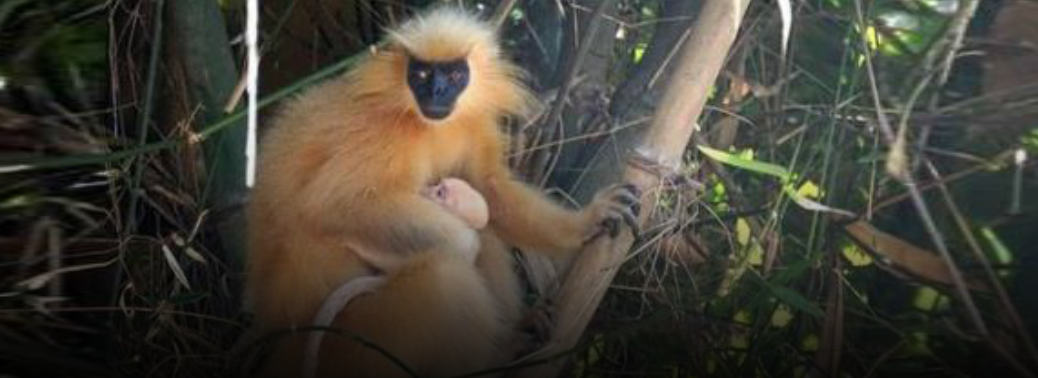
Why in News:
- The Mahatma Gandhi National Rural Employment Guarantee Act (MGNREGA) will have non-human beneficiaries — the rare golden langur (Trachypithecus geei) in a reserve forest in western Assam’s Bongaigaon district.
Background:
- The district authorities launched a ₹27.24-lakh project under the MGNREGA to plant guava, mango, blackberry and other fruit trees to ensure that the resident golden langurs of the 17 sq.km.
- Kakoijana Reserve Forest do not have to risk their lives to find food.
- Several golden langurs have died due to electrocution and in road accidents while looking for food beyond the reserve forests.
Golden Langur:
- Assam announced the success of the Golden Langur Conservation Breeding Program in the State.
- Gee’s golden langur is a leaf-eating monkey found only in north-eastern India and Bhutan.
- It is currently marked endangered in the IUCN list.
- It inhabits evergreen and deciduous tropical forests.
- Like most fruit eating primates, they play a vital role in forest repopulation i.e via seed dispersal, seed predation, and pollination.
RAIN DEFICIT AND WATER STRESS
08, Jun 2019

Why in News:
- Reportedly, nearly 40% of the country is facing an acute paucity of pre-monsoon rain, causing severe water distress in scorching heat.
Background: / How is the rain deficit scenario?
- Though summer droughts are very common, the extent and intensity of aridity witnessed this year are rare.
- The rain deficit has been as high as 48% in the southern peninsula, especially Tamil Nadu and coastal Karnataka.
- It is nearly 30% in western India, notably Gujarat and large parts of Maharashtra, and 17% and 12% in the Central and north-east region respectively.
- Shortfalls of 70 to 80% have also been reported from some places.
- The overall countrywide average rainfall between March and May, 2019 remained 23% below normal.
What do monsoon forecasts suggest?
- The rain deficit conditions across the country are a matter of grave concern. But the redeeming factor is that the onset of the monsoon is round the corner.
- The rain during the 4-month monsoon season (June to September) is anticipated to be well spread out.
- It is also expected to be quantitatively normal or somewhat below normal.
- The India Meteorological Department (IMD) forecast has suggested rainfall to be likely around 96% of the long-period average (LPA).
- On the other hand, private weather forecaster Skymet has put it at 91%.
What is the Concern Though?
- The problem is that both IMD and Skymet have forecast that the monsoon would be sluggish/slow to begin with.
- The reason cited for this is the existence of El Nino (warming up of the Pacific Ocean), which often impairs the monsoon performance.
- Also, IMD and Skymet differ on the progression of El Nino.
- The IMD expects El Nino conditions to turn neutral in the second half of the rainy season. But Skymet reckons it to last the whole season, even if in a weaker form.
- So clearly, there is a possible delay in relief from the current water crisis in some areas.
What is a favourable factor yet?
- Of the three main facets of drought (meteorological, hydrological, agricultural), the present conditions conform chiefly to the meteorological drought (rainfall inadequacy).
- Only in some areas, aridity has accentuated to cause hydrological drought, reflected in exhaustion of the surface and groundwater resources.
- The overall hydrological profile of the country is still positive.
- The total water stock in 91 major reservoirs monitored by the Central Water Commission is
- around 14% above the last year’s corresponding level.
- It is 3% higher than the long-period average (May, 2019 data).
- Agricultural drought has, by and large, been averted as the rabi crops have mostly been harvested and the kharif ones are yet to be planted.
What is the Way Forward?
- An enduring solution to the recurring water crisis largely lies in drought-proofing the vulnerable areas.
- In-situ conservation of rainwater should be a key priority in this regard.
- The need is to construct rainwater-harvesting structures at the field, village and watershed levels.
- Either digging ponds or putting up check dams at suitable sites on the natural water drainage routes should be taken up.
- This is a time-tested water management practice that has helped people survive even in the chronically arid areas.
- Piecemeal measures as isolated water conservation works under the rural employment programmes can, at best, offer only limited gains.
- So what is needed is a broad-based planning, keeping in view the whole watershed, transgressing village, district or even state boundaries.
MUMBAI RANKED FIRST AMONG 403 GLOBAL CITIES IN TRAFFIC INDEX 2018 STUDY
07, Jun 2019
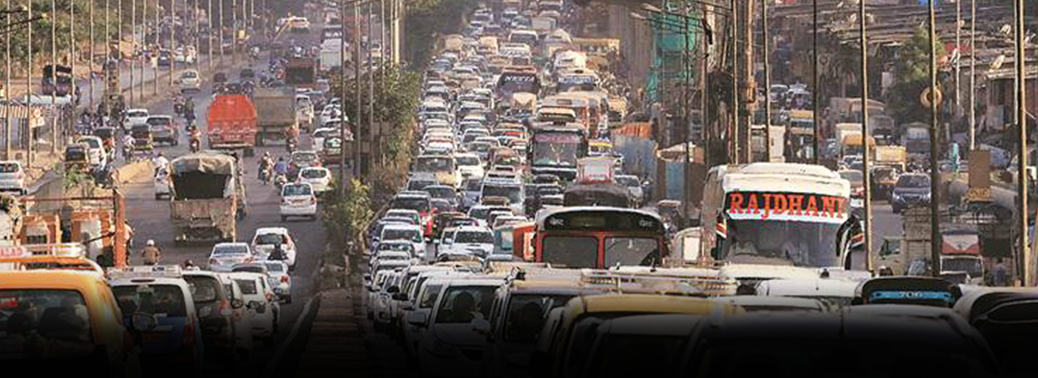
Why in News:
- An analysis of traffic congestion done in more 400 cities across six continents has found that commuters in Mumbai spent the most time on the road last year.
Background:
- Mumbai ranked first in the study, ‘Traffic Index-2018’, by location technology specialist
TomTom, with a congestion level of 65 per cent - New Delhi ranked fourth with a congestion of 58 per cent.
- Mumbai held on to the top rank for the second consecutive year, beat Bogota (63 per cent), Lima (58 per cent) and Moscow (56 per cent).
- Overall study covered 403 cities in 56 countries and defined congestion as the extra time
added to road travel when traffic doesn’t flow freely. - The best time in Mumbai without any congestion would be 2 am and 5 am, when traffic flowed freely.
- The peak hours between 8 am and 10 am resulted in a congestion of 80 per cent, which shot up to 102 per cent between 5 pm and 8 pm, when offices shut for the day.
- August 21 considered as the worst day to be on the road bringing traffic movement to a complete standstill for the better part of the day leading to a congestion of 111 per cent.
- They suggested expanding the scope of the city’s public transport network in order to provide end-to-end connectivity and businesses to provide flexible working hours to employees to ease traffic moving towards the suburbs.
BSVI NORMS
04, Jun 2019
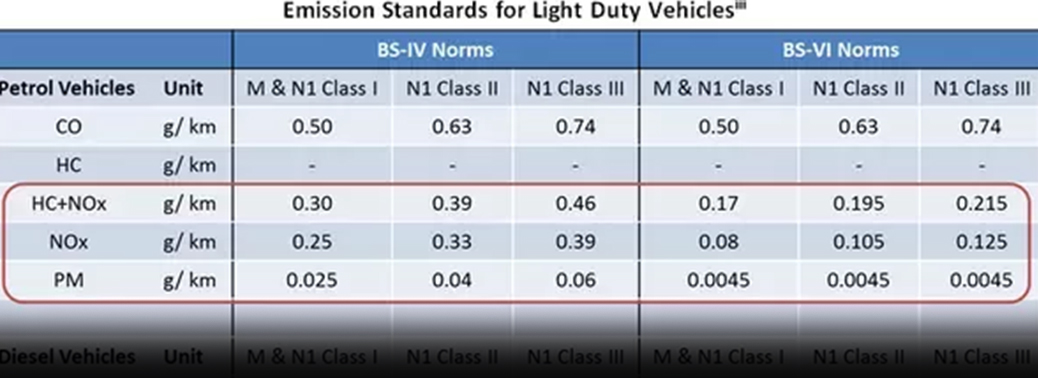
Why in News: / BS Emission Norms:
- The BS or Bharat Stage emission standards are norms instituted by the government to regulate the output of air pollutants from internal combustion engine equipment, including motor vehicles.
- India has been following the European (Euro) emission norms, though with a time lag of five years. BS-IV norms are currently applicable in 33 cities in which the required grade of fuel is available; the rest of India still conforms to BS-III standards.
- India introduced emission norms first in 1991, and tightened them in 1996, when most vehicle manufacturers had to incorporate technology upgrades like catalytic converters to cut exhaust emissions.
- Fuel specifications based on environmental considerations were notified first in April 1996 to be implemented by 2000, and incorporated in BIS 2000 standards. Following the landmark Supreme Court order of April 1999, the Centre notified Bharat Stage-I (BIS 2000) and Bharat Stage-II norms, broadly equivalent to Euro I and Euro II respectively.
- BS-II was for the NCR and other metros; BS-I for the rest of India.
- From April 2005, in line with the Auto Fuel Policy of 2003, BS-III and BS-II fuel quality norms came into existence for 13 major cities, and for the rest of the country respectively.
- BS-IV and BS-III fuel quality norms were introduced from April 2010 in 13 major cities and the rest of India respectively. The fuel standards are decided in India by Environment Ministry and their implementation is managed by Central Pollution Control Board.
- According to international standards, PM 2.5 should not exceed 60 microgram/m3 in air.
But, Delhi’s PM 2.5 levels are 10 times higher. - Burning of any fossil fuel creates pollution. So, either the vehicles should be changed to other types like electric vehicles or else, the fuel which is being burnt shall be made cleaner.
- Increasing air pollution causes diseases like Asthma, Bronchitis, heart disease, etc. NOx when mixed Hydrocarbons in the atmosphere make the air poisonous.
- Earlier Lead, being a slippery metal, was added for lubrication requirements in engines. But, in 1990s it was removed and refineries added certain additives in its place as use of lead was not safe.
Advantages:
- Sulphur will be down from current BS IV level. BS VI = 10 ppm Sulphur and BS IV= 50 ppm Sulphur (ppm = parts per million)
- Particulate matter (sum of all solid and liquid particles suspended in air) will be reduced from 0.005 g/km as against 0.025 g/km of BS IV standard.
- Emission of Nitrogen Oxide (NOx) will be 70% less.
- Bharat Stage Emission Standards (BSES) are emission standards instituted by Government of India. They regulate the output of pollutants from Internal combustion engines and spark-ignition engines, including motor vehicles.
International Centre for Automotive Technology (ICAT)
- The International Centre for Automotive Technology (ICAT) is a division of NATRiP implementation society (NATIS), under the administrative control of the Ministry of Heavy Industries & Public Enterprises, Government of India.
- ICAT is the first of new world-class centers established under the National Automotive Testing and R&D Infrastructure Project (NATRiP) with the main objective of carrying out Research & Development besides extending homologation facilities in the field of Automotive Engineering.
- ICAT is one of the prime testing agencies recognized by the Government of India as one of the accredited ‘Type Approval and Homologation’ agencies in India under Central Motor Vehicle Rules (CMVR).
- It has also been recognized as Scientific and Industrial Research Organization (SIRO) by the Department of Scientific and Industrial Research (DSIR), since Feb 2010, by BIS for Tyre Testing, Safety Glasses and by Central Pollution Control Board (CPCB) for emission and noise testing of generator sets.
SOLAR ROOF TOP ENERGY
04, Jun 2019

Why in News:
- India receives about 300 clear and solar energy in Indian days in a year and solar exposure of 5,000 trillion kilowatt-hours every year. It makes India a high potential country for solar power generation.
- Considering the potential Indian government set a target to achieve 100 GW power capacity through grid-connected solar energy, out of which 40 GW is estimated to come through rooftop solar installations by 2022.
- Towards this objective several steps have been taken, and as a result as of December 2018, the cumulative installed capacity of Roof Top systems reached 3,260 MW. Rooftop installations grew 66% (year-over-year) with capacity additions of 1,655 MW in 2018.
- Maharashtra (473 MW), Tamil Nadu (312 MW), Karnataka (272 MW), Rajasthan (270 MW) and Uttar Pradesh (223 MW) are the top five states accounting for 54 per cent share of the total market.
Background:
- Advantages of Roof-top program over solar power generation
- No additional land required: Rooftop solar offers certain advantages over large solar plants as no land and additional transmission capacity is required.
- Transmission cost: it saves transmission and distribution losses, which are to the tune of 30 per cent. ne unit energy generated by rooftop solar is equivalent to 1.4-unit energy generated from large solar power plant considering 30 per cent of transmission and distribution losses.
- Reducing cost: With decreasing prices of solar panel, the rooftop solar has become even more promising, it is now not only cheaper than commercial and industrial power. A one- kilowatt (kW) rooftop system can produce three to five units of electricity a day.
- Owners of the rooftop systems can also earn by supplying excess power to state-owned
power distribution firms (discoms). The concept, known as “net metering,” - Energy access: Access to affordable power is a major issue for Indian households in both urban and rural areas. Renewable energy and in particular rooftop solar can greatly contribute to improving this situation.
- Rooftop solar projects help in decreasing air pollutants that contribute to smog and acid rain and further cause serious health consequences including heart attacks and poor lung function.
Challenges:
- Lack of clarity: the detailed approval process for rooftop solar plants, including net- metering billing, is not clear.
- Although the cost has been reduced, it is not less than the cost of conventional energy sources such as thermal power. Moreover, a residential building’s power consumption is charged at a lower rate than that of commercial and industrial buildings.
- Financing: Although the cost of power production from solar power is very less, households lack easy access to capital for the purchase of equipment.
- Less household involvement: India’s rooftop solar capacity rose to about 3.4 gigawatts (GW) in September, at a year-on-year growth rate of 75%, but most of it came from commercial and industrial buildings, whereas households account for only 9% of the total rooftop solar capacity.
- Net metering issue: the Net metering concept has found very little acceptability among the discus, as they are already financially stressed and it put additional burden on them. Also, only a few states have begun the actual implementation of the policy.
- Consumer perception: there is a perception that it may not perform as expected over its lifetime. Additionally, there are trust issues as several entrepreneurs in the rooftop solar market are comparatively new with a little track record.
- Although progress in solar rooftop power is considerable, due to lack of major participation from households, government target of 40 GW by 2022 will not be achieved and only 38% of the target will be achieved.
- Cost of energy storage: as solar power can only be generated during the day time, it warrants energy storage to ensure continued usage at night time and the cost of battery storage per KW is significantly high.
- Lack of information: One of the key barriers to installing rooftop solar systems is that they do not know who to contact to understand the processes to be followed and permissions required.
Government Initiatives:
- Grid-Connected Rooftop Solar Programme:
- Government has recently approved the 2nd phase of the Grid Connected Rooftop Solar Programme.
- Program is mainly aimed at achieving the cumulative capacity of 40,000 MW from Rooftop Solar Projects by the year 2022 and will be implemented with the total central financial support of Rs.11,814 crore.
- Under the program, Central Financial Assistance (CFA) for the residential sector is available for
40% for Rooftop Solar (RTS) Projects up to 3 kW capacity. - 20% for RTS system capacity beyond 3 kW and up to 10 kW.
- Central financial support will not be available for other categories i.e., institutional, educational, social, government, commercial, industrial, etc.
- This phase will basically focus on the increased involvement of DISCOMs. They will be provided with the performance-based incentives based on RTS capacity achieved in a financial year.
- The incentives to the DISCOMs will be available only for initial capacity addition of 18,000 MW under the scheme.
Net-Metering
- Net metering allows residential and commercial customers who generate their own electricity from solar power to sell the electricity they aren’t using back into the grid. This billing mechanism credits solar energy system owners for the electricity they add to the grid. Each state has its own net metering mechanism as per the requirement.
Other government initiatives:
- The Central Government has now prepared single window clearance online portal with a feature to track the approval process for different agencies such as state nodal agencies, electricity distribution companies, chief electrical inspector, urban local bodies, etc.
- For capacity building of discoms, state nodal agencies, chief electrical inspectors, lenders, etc. special training programmes are being organized under technical assistance programs of multilateral and bilateral agencies. On the financing side, different mechanisms are being explored including the RESCO model, leasing a roof, demand aggregation, credit risk guarantee mechanism, etc. Under the Ministry of New and Renewable Energy (MNRE), Indian schools are also eligible for a subsidy covering up to 30 per cent of the benchmark cost of a solar project. Environment Impact Assessment (EIA) Notification, 2006 requiring buildings with an area over 5,000 square metres to have at least 1 per cent of their connected load through SRT. The Reserve Bank of India has identified solar rooftop as a priority sector for lending. Eight public sector banks have included SRT systems under their housing or housing improvement loans.
Way Forward:
- Financing: To meet the 40 GW rooftop solar target by 2022, a total of INR 2.07 trillion is required, in addition to current subsidies and INR 2.52 trillion (USD 39 billion) excluding subsidies. The government must put efforts for this much of financing.
- New policy initiatives: To drive SRT installation, the government must focus on new and updated policy initiatives and administrative interventions, rather than relying totally on the subsidized model. Net metering policies must be reformed so that they become attractive to the consumer.
JUST 20% WATER LEFT IN 91 MAJOR RESERVOIRS
03, Jun 2019
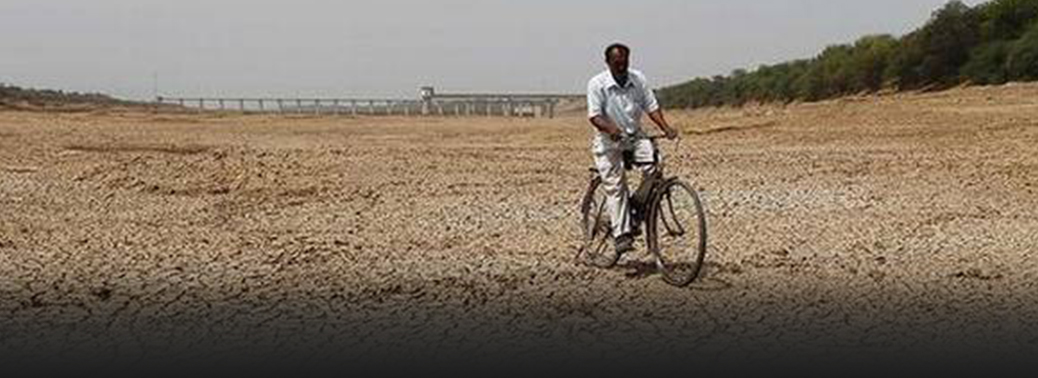
Why in News:
- Water storage in reservoirs of most States of west and south India has dipped to less than the average of last 10 years, the Central Water Commission (CWC) said, indicating a worsening water crisis.
Details:
- In the western region, which includes Gujarat and Maharashtra, there are 27 major reservoirs with total live storage capacity of 31.26 billion cubic metres.
- The total live storage available in these reservoirs is 11% of the total live storage capacity.
- The storage during the corresponding period last year was 15% and the average storage of the corresponding period in last 10 years was 19% of its live storage capacity,” the CWC said. Private weather forecaster Skymet said that rainfall in Vidarbha, Marathwada, west Madhya Pradesh and Gujarat will be “poorer than normal”, while southern India is expected to receive below normal rainfall.
CWC
- CWC is apex Technical Organization of India in the field of Water Resources.
- It is presently functioning as an attached office of Union Ministry of Water Resources, River Development and Ganga Rejuvenation. It is charged with the general responsibilities of initiating and coordinating schemes of control, utilization and conservation of water
resources throughout the country.
NGT stays linkage of Godavari, Krishna and Penna
01, Jun 2019
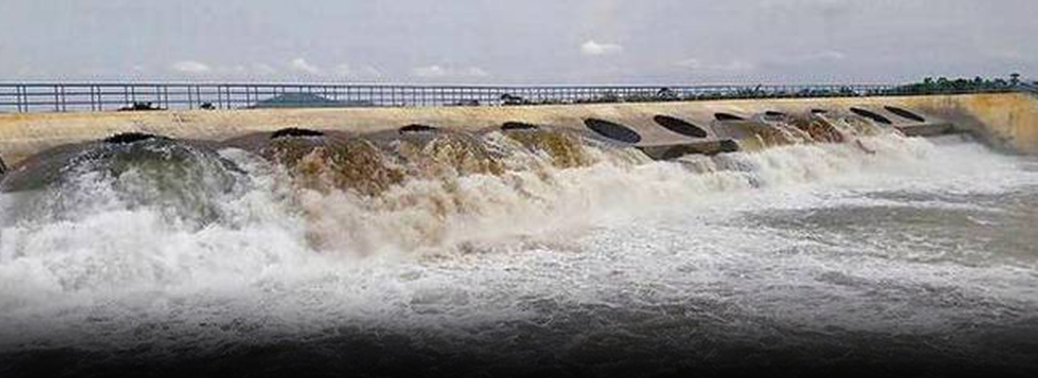
Why in News:
- The National Green Tribunal (NGT) has issued an order staying the Andhra Pradesh Government’s scheme to link Godavari Krishna and Penna Rivers of the State. It ordered that Ministry of Environment should submit a report on it within a month.
Details:
- The Tribunal in an order released said that the State could not go ahead with the project without getting clearance from the Central Water Commission (CWC) and the Ministry of Environment, Forest and Climate Change.
- A Bench of the tribunal in an order “restrained” Andhra Pradesh from proceeding further with the project till acquired environmental clearance, consent to establish and operate the project under provisions of the Environmental (Protection) Act, 1986, Water (Prevention and Control of Pollution) Act, 1974 and the Air (Prevention and Control of Pollution) Act, 1981. The tribunal ordered the Regional office of the Union Environment Ministry to inspect the river linkage project along with the Central Pollution Control Board and the State Pollution Control Board and submit a factual report.
CWC
- CWC is apex Technical Organization of India in the field of Water Resources.
- It is presently functioning as an attached office of Union Ministry of Water Resources, River Development and Ganga Rejuvenation.
- It is charged with the general responsibilities of initiating and coordinating schemes of control, utilization and conservation of water resources throughout the country.
84 CITIES SUBMIT PLANS FOR IMPROVING AIR QUALITY BY 2024
30, May 2019
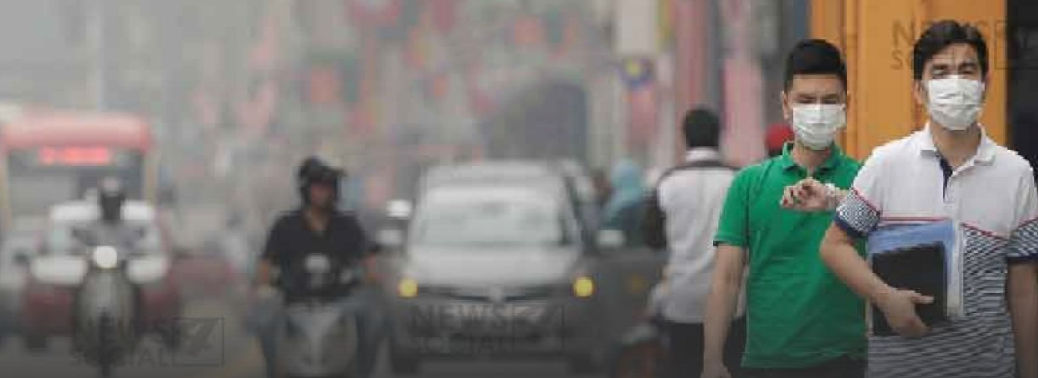
Why in News:
- Eighty-four out of the 102 cities that have been tasked with reducing toxic particulate matter levels by 20%-30% by 2024 have submitted their proposals
Background:
- One hundred and two cities, considered India’s most polluted, have been tasked with reducing PM (particulate matter) 10 and PM 2.5 levels by 2024, as part of the National Clean Air Programme (NCAP).
National Clean Air Programme (NCAP)
- The National Clean Air Programme is a pollution control initiative that was launched by the Ministry of Environment with the intention to cut the concentration of coarse (particulate matter of diameter 10 micrometer or less, or PM10) and fine particles (particulate matter of diameter 2.5 micrometer or less, or PM2.5) by at least 20% in the next five years, with 2017 as the base year for comparison. Following reports by WHO and the air quality data obtained, 102 cities from 23 States and UTs have been chosen as non-attainment cities. Maharashtra tops the list with 17 cities in the list, including Pune and Nagpur, while Uttar Pradesh is second with 15 cities chosen, including Lucknow and Varanasi. A city from Jharkhand, Meghalaya, Tamil Nadu and West Bengal too are in the list.Haryana figure in the list.
-
It adopts collaborative and participatory approach involving relevant Central Ministries, State Governments, local bodies and other Stakeholders
Apart from experts from the industry and academia, the programme is expected to be a collaboration between the Ministry of Road Transport and Highways, Ministry of Petroleum and Natural Gas, Ministry of New and Renewable Energy, Ministry of Heavy Industry, Ministry of Housing and Urban Affairs, Ministry of Agriculture, Ministry of Health, NITI Aayog, and Central Pollution Control Board.
NCAP Targets:
- The States in which the cities are located are expected to produce plans that include increasing the number of monitoring stations, providing technology support, conducting source apportionment studies, and strengthening enforcement.
- The NCAP requires cities to implement specific measures such as “ensuring roads are pothole-free to improve traffic flow and thereby reduce dust” (within 60 days) or “ensuring strict action against unauthorised brick kilns” (within 30 days). It doesn’t specify an exact date for when these obligations kick in.
Recent Steps taken:
- In April, the Ministry constituted a committee to implement the NCAP, chaired by the Secretary, Union Environment Ministry, and has among its members the Joint Secretary (Thermal), Ministry of Power; Director-General, The Energy Resources Institute (TERI), the Delhi-based think-tank; and Professor Sachidananda Tripathi, Indian Institute of Technology-Kanpur (IIT-K).
- As part of its public-outreach campaign, the Ministry has collaborated with the Bhamla Foundation, as well as artistes from Bollywood, to develop a theme song Hawa aane de (‘Let the air in’).
NO WIND, NO SUN: GREEN PROJECTS IN LIMBO
27, May 2019

Why in News:
- Renewable energy sector stifled by a host of issues — from low tariffs to lack of government push
Background: / What is the actual status of renewable energy installations?
- In 2015 Union government has announced 175 GW of renewable energy installations, recently the target has been increased to 225 GW. If India hits the 175 GW target, it stands to meet its greenhouse-gas emission goal under the Paris climate agreement. Of the current goal of 100 GW from solar energy by 2022, 40 GW is to come from rooftop installations, and 60 GW from large solar parks. But India has missed several interim milestones since it announced its 175 GW target. The obstacles have capped capacity addition to 69 GW till date, with India missing its 2016 and 2017 milestones. The misses happened despite renewable capacity being augmented at a blistering pace.
What are the challenges in achieving the ambitious target?
- Lower Margins – Wind and solar tariffs have hit such low levels that suppliers are working with wafer-thin margins. Rooftop solar clocked a compound annual growth rate of 117% between 2013 and 2017 India only hit 3% of its goal by the end of 2017. Policy Lacunas – In the solar sector alone, which the government is prioritising, policy uncertainties loom large. Homeowners aren’t warming up to the idea of installing photovoltaic panels on their terraces because the economics does not work out for them. Practical challenges – Technological and financial challenges remain, both wind and solar generation could be erratic.
What measures needs to be taken?
- India’s creaky electricity grid must be modernised to distribute such power efficiently.
- To hit its 2022 target of 175 GW, 106 GW will have to be added in four years, more than twice the capacity added in the last four. Manufacturers of photovoltaic (PV) cells have demanded a 70% safeguard duty on Chinese PV imports, and the Directorate General of Trade Remedies need take a call on this. Policies favouring homeowners to sell electricity back to the grid, needs to be incorporated with a nationwide “net-metering” policy.
ZERO WASTE CHENNAI INITIATIVE KICKS OFF
27, May 2019
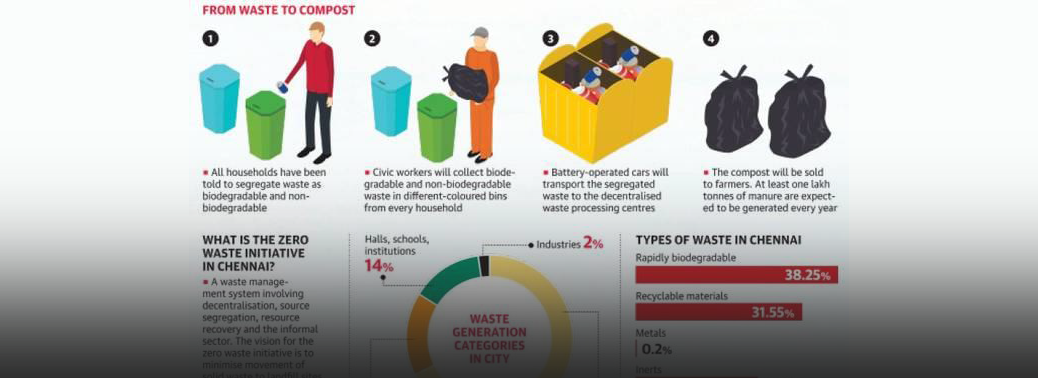
Why in News:
- A major initiative towards Zero Waste Chennai has begun in Anna Nagar.
Background: / Vision:
- The vision for the Zero Waste initiative is to minimise movement of solid waste to landfill sites.
- As far as possible, waste should be processed and converted in-situ at decentralised composting or organic waste processing unit or sent to specialised scientific disposal centres.
- The plan is to create a live zero-waste model that could be replicated across the city.
Partner:
- The Greater Chennai Corporation has entered into an MoU with the Citizen Consumer and Civic Action Group (CAG), which will play the role of a knowledge partner.
Campaign:
- During the campaign, Corporation staff, such as animators, conservancy workers, engineers and senior officials, will display a chart explaining the role and responsibilities of residents. They will then get them to sign a pledge indicating their commitment to source segregation and composting.
Solid Waste Mangement:
- Solid Waste Management: It is a term that is used to refer to the process of collecting and treating solid wastes. It also includes solutions for recycling items that do not belong to garbage or trash.
- The Rules are applicable beyond Municipal areas and extend to urban agglomerations, census towns, notified industrial townships, areas under the control of Indian Railways, airports, airbase, Port and harbour, defence establishments, special economic zones, State and Central government organizations, places of pilgrims, religious & historical importance.
- The source segregation of waste has been mandated to channelize the waste to wealth by recovery, reuse and recycle.
- Responsibilities of Generators have been introduced to segregate waste into three streams: Wet (Biodegradable),
Dry (Plastic, Paper, metal, wood, etc.) and - Domestic hazardous wastes (diapers, napkins, empty containers of cleaning agents, mosquito repellents, etc.)
- Segregated wastes should be handed over to authorized rag-pickers or waste collectors or local bodies.
- Integration of waste pickers/ rag pickers and waste dealers in the formal system. This is to be done by State Governments, and Self-Help Group, or any other group to be formed.
- Generator will have to pay ‘User Fee’ to waste collector and for ‘Spot Fine’ for Littering and
Non-segregation.
Solid Waste Management System in India
Solid Waste Management Rules, 2016
Key Features:
LESSONS FROM FANI CYCLONE – CLIMATE-RISKED WORLD
26, May 2019
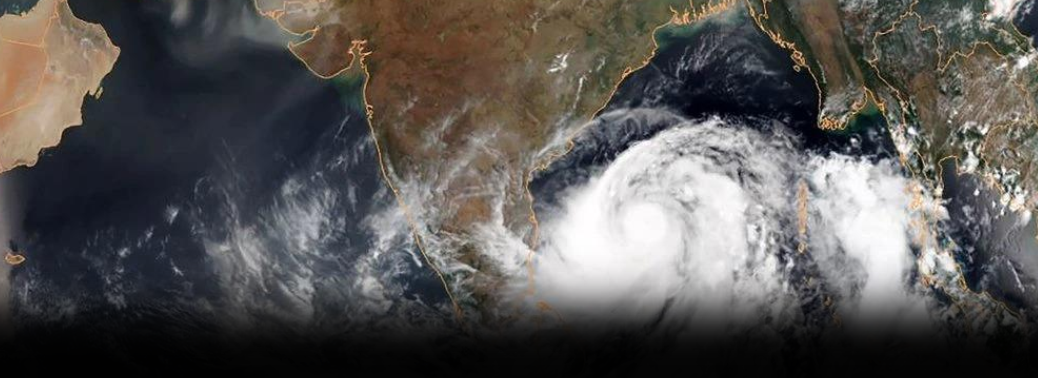
Why in News:
- A horrific tropical cyclone Fani made landfall in Odisha recently.
- It is imperative at this juncture to understand the increasingly climate-risked world that Fani indicated.
Background:
What was Fani’s impact?
- Cyclone Fani left behind a trail of broken homes, powerlines and infrastructure. Odisha has lost years of its development dividend in one shock.
- Nevertheless, the fact that there were far fewer fatalities in this cyclone than before is to be acknowledged.
- Even when wind speeds crossed 170 km/hour and reached 204 km/hour, the loss of human life was contained at 41 (reportedly increased to 70).
- In contrast, the state had lost 10,000 people in the super cyclone of 1999.
What is the climate change factor here?
- The 2018 climate assessment by the World Meteorological Organization (WMO) gives some inputs in this regard.
- Tropical storms in the Northern Hemisphere were up, from 63 in the previous year to 74 in 2018. They were roughly the same, 22, in the Southern Hemisphere.
- The fact is that there is a big difference in these storms, as the India Meteorological Department (IMD) is finding. The recent storms are being increasingly and crazily unpredictable. In recent years, the IMD has nearly perfected the science of cyclone forecast. But now it is learning, in real time, to change its methods and to advance its technology.
What is the recent evidence to this?
- Ockhi which hit the Kerala coast in late 2017 took many lives and caught fishermen at sea unawares. Ockhi went from a deep depression in the ocean to a cyclonic storm in a matter of just 6 hours. The failure to predict and warn was not just human, but because of the unnatural characteristics of such a tropical storm.
- It changed direction; it gathered steam when least expected and became more intense and more virulent at speeds never seen before. One reason was the intense heat pockets in the ocean, which changed the direction and speed of the cyclone.
What was the case with Fani?
- As the IMD was prepared for such changes, it used even more sophisticated equipment and improved the prediction models in Fani.
- But the speed of change was so rapid that the learning of 2017 from Ockhi became outdated. Intensity – Fani intensified from severe to very severe in no time.
- Landfall – Fani also made landfall ahead of its schedule. It was to hit Odisha by the afternoon; in real time, this meant evacuations should have been completed by then.
- But Fani landed with ferocity by the morning itself.
- The fact that the state administration had planned and managed to move people ahead of schedule speaks volumes for the preparedness.
- Inland – Fani moved inland and reached Bhubaneshwar.
- But notably, it did not weaken in its wind speed there, as should have been the usual case. This was strange because storms need moisture on land to gather intensity and to lash the land with rain.
- But it was peak summer, a time when ocean storms never hit in any case.
- It is still unclear why it moved inland and how should this be predicted in the future.
- In all, Fani demands that India invest in the science of weather and in the governance capacity to move rapidly to avert disasters.
- The future is even more risked and even more unpredictable than imagined.
BISHNOIS
23, May 2019
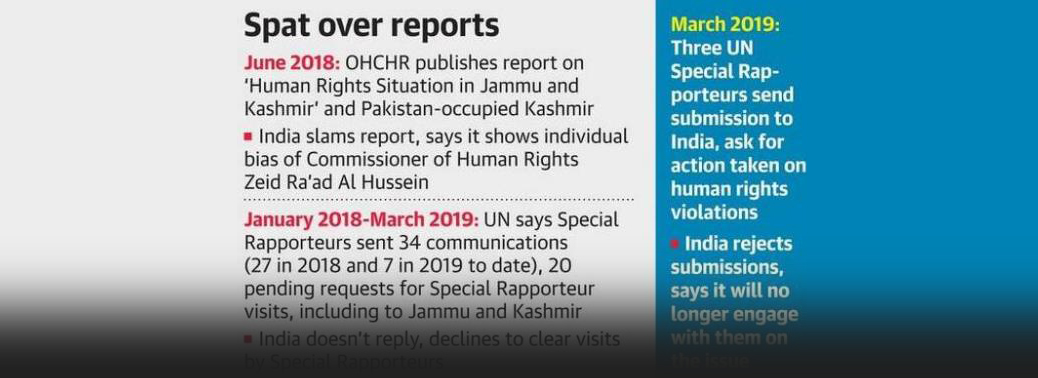
Why in News:
- The bishnoi farmers in Rajasthan fill the troughs to save deer in rajasthan
Details:
- Bishnoi farmers in Sriganganagar and Hanumangarh districts of northern Rajasthan have dug up about 70 troughs, many of them in their own agricultural fields, in a 60-square km area and filled them up with water for antelopes foraging in the plains of the region.
- The animals were earlier losing their lives by drowning while trying to drink water at the two major canals. The Indira Gandhi Canal and Bhakra Canal irrigate the fields in the otherwise arid areas of the two districts. Blackbucks were earlier climbing up the canal banks trying to drink the flowing water, but ended up drowning as the canal edges have 45-degree slopes that the animals were unable to climb back over.
Bishnois:
- Rajasthan’s Bishnoi community, is known for its beliefs associated with nature worship and wildlife conservation
- The Bishnois, a Vaishnavite sect, living in western Rajasthan on the fringe of the Thar desert, have for centuries, been conserving the flora and fauna to the extent of sacrificing their lives to protect the environment.
- For these nature-loving people, protection of
the environment, wildlife, and plants is a part and parcel of their sacred traditions. - The basic philosophy of this religion is that all living things have a right to survive and share all resources. The sacrifice made by Amrita Devi and over 350 others is a heart-rending example of their devotion. Before dying she uttered the now famous couplet of the Bishnois, ‘A chopped head is cheaper than a felled tree’.
- People from 83 surrounding villages rushed to prevent the men from felling the trees and by the end of the day more than 350 had lost their lives.
- The Bishnois have indeed proved that human lives are a small price to pay to protect the wildlife and the forests around them.
KOCHI OFFERS HELP TO SOLARISE AIRPORTS IN ISA COUNTRIES TODAYS HINDU
23, May 2019

Why in News:
- Plan of action to go green by emulating Cochin International Airport limited’s use of solar energy.
Background: / What is ISA?
- The International Solar Alliance is an alliance of more than 120 countries, most of them being sunshine countries, which come either completely or partly between the Tropic of Cancer and the Tropic of Capricorn.
- The primary objective is to collectively work for efficient exploitation of solar energy to reduce dependence on fossil-based fuels. This initiative was proposed by our Prime Minister of India first during his speech at Wembley Stadium, London. This initiative was launched at the India Africa Summit and a meeting was held among them before the conclave of 2015 United Nations Climate Change Conference in Paris on November 2015. This is a treaty-based inter-governmental organization. The alliance will take the shape of an international treaty once its rules are worked out.
- The Headquarters is in India with its Interim Secretariat being setup in Gurgaon.
- The agreement will become operational after at least 15 countries have ratified it.
- The framework agreement says that the members of ISA would take coordinated actions through programmes and activities that will aggregate the demands for solar finance, solar technologies, innovation, research and development, and capacity building.
- The ISA aims to develop cost-efficient solar technologies and applications.
- It is also expected to mobilise $1 trillion for funding solar energy projects by 2030.
What is the working plan of ISA?
- The countries within the tropics also happen to be the ones in which the most growth in energy demand is expected in the years to come. The ISA is an effort to ensure that as these countries increase their electricity production, they should predominantly use solar energy and avoid fossil fuels. However, this can happen only if the costs of solar energy are competitive as compared to the traditional sources of power. The ISA seeks to do three things to bring down the costs of technology as well as of finance needed for a solar project. It seeks to boost global demand, which will result in further reduction in the prices of solar energy deployment. It seeks to promote standardisation in the use of equipment and processes for generating electricity. Standardisation will make the manufacturing of equipment and other hardware cheaper.
- And it seeks to boost research and development, particularly in areas of efficient storage systems.
Is ISA part of UN program?
- Strictly speaking, the ISA agreement is separate from the United Nations-mandated climate change talks that are held every year.
- But it was proposed at the Paris Climate Conference last year, and has become a reality at the Marrakesh meeting now, in the process getting linked closely with the UN climate process.
Can ISA be successful?
- The revolution in the deployment of solar energy over the last several years has been made possible by a sharp drop in the costs of production of electricity through solar cells. The costs have come down by 80%-85% over the last 7 years, due to a rapidly growing demand. The total installed capacity of solar energy across the world has risen by almost 8 times during the same time.
- In the light of these, the ISA has over the last year received solid support from a large number of countries, including those that are not exactly tropical countries.
- The US has repeatedly expressed its desire to join the Alliance, and France actually did so on Tuesday. More countries are likely to sign up during the remaining days of the conference, and also later. The signing has to be followed by ratifications by the signatory countries.
How significant is ISA to India
- The ISA gives India an opportunity to take global leadership in the fight against climate change. The secretariat of the ISA is to be located in India. It will also host a meeting of ISA assembly every year. India has promised to contribute $27 million for creating building infrastructure and recurring expenditure for five years, till 2020-21.
- A part of this money will also go towards creating a corpus fund that will generate revenues for the budget of ISA.
What are the difficulties?
- Raising a large amount of money, like $1trillion, is going to be difficult given that developed countries have historically been stingy in funding renewable energy projects in developing countries. Also, such a large sum cannot be raised from public sources alone. The ISA will have to devise mechanisms to mobilise private finances.
- The new alliance will also have to work in tandem with other bodies such as the International Renewable Energy Agency and the Renewable Energy and Energy Efficiency Partnership to bring a co-ordinated effort.
VEDANTA GETS APPROVAL FOR TESTS FOR 274 HYDROCARBON WELLS IN T.N., PUDUCHERRY
13, May 2019
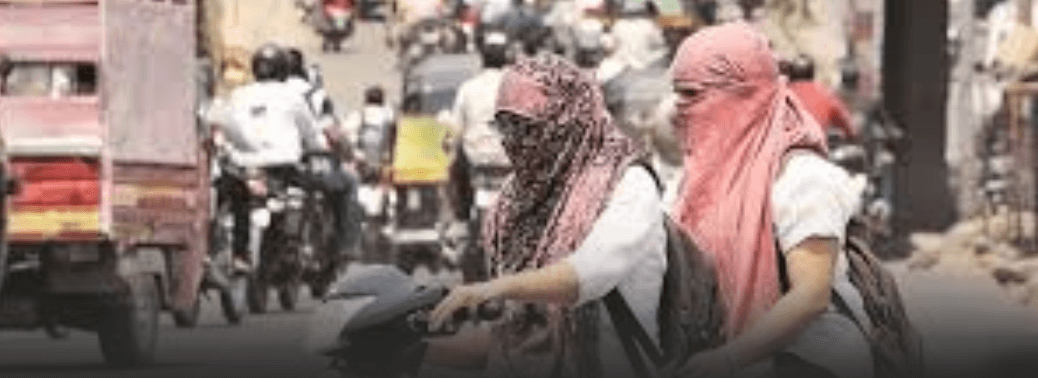
Why in News:
- The Ministry of Environment and Forest (MoEF) has granted the Terms of Reference to Vedanta Ltd’s Cairn Oil & Gas, to carry out Environment Impact Assessment (EIA) for drilling a total of 274 offshore and onshore oil and gas exploration wells
Background:
- Union government approved private and government players to explore and exploit unconventional hydrocarbons. Unconventional hydrocarbons are sources of oil and gas which require methods for extraction which are not normally necessary in the conventional extraction of hydrocarbons such as Coal bed Methane, shale gas/oil, tight gas and gas hydrates.
Coal Bed Methane:
- India has the fifth largest proven coal reserves in the world.
- The CBM resources in the country are about 92 TCF (2600 BCM) in 12 states of India.
Shale Gas:
- It is a natural gas formed from being trapped within shale rocks.
- ONGC estimates 187.5 Trillion Cubic Feet (TCF) of shale gas in Cambay, KG, Cauvery, Ganga and Assam basins in India.
Gas hydrate:
- A naturally occurring, ice-like combination of natural gas and water found in the world’s oceans and Polar Regions. US Geological Survey states that India has the second largest gas hydrates in World.The Krishna Godavari, Cauvery and Kerala basins alone contributing 100-130 trillion cubic feet of estimated reserves.
Tight gas:
- Tight gas refers to natural gas reservoirs locked in extraordinarily impermeable, hard
- rock, making the underground formation extremely “tight.”
- India’s Cambay field holds 413bn cubic feet of economically recoverable tight gas
- NOTE: In 2018 The Ministry of Petroleum and Natural Gas has liberalised the definition of petroleum to bring more hydrocarbons such as coal bed methane and shale gas.
Benefits of Unconventional Hydrocarbons:
- With appropriate safeguards, they can provide a cleaner source of energy than other fossil fuels.
- Creates jobs and provides economic benefits to the entire domestic production supply chain, as well as to chemical and other manufacturers, who benefit from lower feedstock and energy costs.
- Increase domestic production – aspiration of 10% reduction in imports by 2022
- Build infrastructure – Greenfield and brownfield refineries, petrochemical plants, pipelines, LNG terminals.
- It will attract FDI & technical expertise.
Challenges in Exploitation of Unconventional Hydrocarbons Challenges in Shale Gas exploitation:
- Use of water: (Fracking technique) uses around 5-7 million litres of water per well.
- The massive amount of water used in the fracking process has led to water shortages in some drilling areas.
- Environmental concerns: Fracking has led to extensive deforestation and flooding of the nearby area.
- Groundwater contamination: Environmentalists say potentially carcinogenic chemicals are used in shale gas exploration which will contaminate groundwater.
- Earthquakes: Fracking process can cause small earth tremors in the region.
Challenges in Coal Bed Methane exploitation:
- Simultaneous operations of Coal Bed Methane and coal mining by multiple owners results in management issues.
- Despite the huge reserves, a mismatch exists between estimated resources and gas in- place.
- There is a possibility of damage of gas wells resulting in explosive atmosphere in coal mines during simultaneous extraction of coal and CBM.
- Multiple ownership for simultaneous exploitation may not be desirable for the life, health and safety of the workers employed in such mines.
- Safe Operating Procedures (SOP)for simultaneous exploration are not effectively implemented.
New policy framework on Unconventional Hydrocarbon
- New policy will be carried out under the existing production sharing contracts and nomination fields. It will also enhance production of unconventional hydrocarbons in the existing fields.
Future impact of new policy on Unconventional hydrocarbon:
- Will lead to induction of new, innovative and cutting-edge technology and forging new technological collaboration to exploit unconventional hydrocarbons.
- Will enable the realization of prospective hydrocarbon reserves in the existing Contract Areas which otherwise would remain unexplored and unexploited.
- Will reduce import dependency on oil and gas by 10% by 2022.
- To promote ease of doing business in the oil and gas sector in India to attract higher foreign investments.
- Exploration and exploitation of additional hydrocarbon will spur new investment, impetus to economic activities, additional employment generation.
Way Forward:
- Unconventional energy sources are significant for India’s Energy security, but there should be a balance between exploiting energy sources and Environment.
- Shale Oil and Gas Authority should be set up.
- Early roll out of Policy on Unconventional Energy sources will provide an impetus for alternate Energy development in India.
IAF plane takes to the air on blended bio-fuel
18, Dec 2018

Context:
- For the first time, an An-32 transport aircraft of the Indian Air Force (IAF) flew with blended bio-jet fuel produced from Jatropha oil, unlocking the possibility of gradually expanding it to the entire service at some point.
Details:
- The Indian Air Force flew its military aircraft successfully using a mix of biofuel and Aviation Turbine Fuel (ATF) (a mix of 10 per cent bio-jet fuel produced from Jatropha and 90 per cent ATF)
- This has the dual benefit of reducing the carbon footprint as well as usage of fossil fuels.
- With this India has thus joined a league of select nations to have “developed, tested and certified” a single step Hydro-processed Renewable Jet (HRJ) process to convert non-edible oil into biofuel for use on military aircraft.
About bio-fuel:
- Biofuel is a hydrocarbon fuel produced from organic matter.
Generation of biofuels:
- First Generation biofuels are produced directly from food crops by abstracting the oils for use in biodiesel or producing bioethanol through fermentation. Crops such as wheat and sugar are the most widely used feedstock for bioethanol while oil seed rape has proved a very effective crop for use in biodiesel.
- Second Generation biofuels are produced from non-food crops such as wood, organic waste, food crop waste and specific biomass crops. Cellulosic ethanol technology fits in here, as do non-food crop technologies such as jatropha-based biofuels.
- Third Generation of biofuels is based on improvements in the production of biomass. It takes advantage of specially engineered energy crops such as algae as its energy source. The algae are cultured to act as a low-cost, high-energy and entirely renewable feedstock. It is predicted that algae will have the potential to produce more energy per acre than conventional crops.
- Fourth Generation Biofuels are aimed at not only producing sustainable energy but also a way of capturing and storing co2.
The Indian bustard: on its last legs
17, Dec 2018
Context:
- The Great Indian Bustard, showing its decline in recent years.
Details:
- India, effectively the only home of the bustards, now harbours less than 150 individuals in five States.
- It is critically endangered — IUCN Red data list
Habitat:
- Arid and semi-arid grasslands with scattered short scrub, bushes and low intensity cultivation in flat or gently undulating terrain. It avoids irrigated areas
- Found in India and the adjoining regions of Pakistan
- In India, the bird was historically found in Punjab, Haryana, Uttar Pradesh, Madhya Pradesh, Chhattisgarh, Odisha, Andhra Pradesh, Rajasthan, Gujarat, Maharashtra, Karnataka and Tamil Nadu. Today the bustard is restricted to isolated pockets in Andhra Pradesh, Gujarat, Karnataka, Maharashtra, Madhya Pradesh and Rajasthan
- It is state bird of Rajasthan
Reasons for threat:
- Hunting for sport and food, despite being listed in Schedule I of India’s Wildlife Protection Act
- Grassland conversion, dispersal of birds into agricultural landscapes. The intensification of agriculture, including more pesticides, barbed-wire fences and new crops could endanger the birds’ survival in this landscape.
- Developmental projects such as new wind turbines, more power lines are reasons for its decimation. Bustards, with their poor frontal vision and heavy bodies, cannot manoeuvre away from cables in time, they get charred to death due to collisions with power lines.
- Also mining, stone quarrying havae increased the severity of habitat degradation and disturbance
India recorded 95 tiger deaths in 2018, 41 outside reserves
16, Dec 2018

Context:
- According to the National Tiger Conservation Authority’s (NTCA) records till December 15, 2018, there were 95 cases of tiger deaths in the country. Of this, 41 cases of tiger deaths outside tiger reserves have been reported.
Details:
- Most of the deaths outside tiger reserves in the country were reported in Maharastra in 2018, which is mainly because more than a third of its tigers live outside tiger reserves in the State.
- And also, in many areas, they are venturing into human dominated landscape which increases the probability of human-animal conflict and results in deaths
- The NTCA maintains the official database of tiger mortality in the country, and compiles figures from reports sent by different States on the basis of recovery of bodies or seizure of body parts.
About NTCA:
- It is a statutory body under the Ministry of Environment, Forests and Climate Change constituted under enabling provisions of the Wildlife (Protection) Act, 1972
- It was initially launched in 2005, following the recommendations of the Tiger Task Force. It was given statutory status by 2006 amendment of the Wildlife Protection Act
- It is set up under the chairmanship of the Minister of Environment, Forests and Climate Change
- It approves the reserve specific tiger conservation plan prepared by the State Government.
- evaluate and assess various aspects of sustainable ecology and disallow any ecologically unsustainable land use such as, mining, industry and other projects within the tiger reserves;
- provide for management focus and measures for addressing conflicts of men and wild animal and to emphasize on co-existence in forest areas outside the National Parks, sanctuaries or tiger reserve, in the working plan code;
- provide information on protection measures including future conservation plan, estimation of population of tiger and its natural prey species, status of habitats, disease surveillance, mortality survey, patrolling, reports on untoward happenings and such other management aspects as it may deem fit including future plan conservation;
- ensure critical support including scientific, information technology and legal support for better implementation of the tiger conservation plan;
- Facilitate ongoing capacity building programme for skill development of officers and staff of tiger reserves.
- The National Tiger Conservation Authority (NTCA) recently ordered that there would be no tribal rights under the Scheduled Tribes and Other Traditional Forest Dwellers (Recognition of Forest Rights) Act, 2006 (FRA) in critical tiger habitats.
CDV in GIR Forests
16, Oct 2018
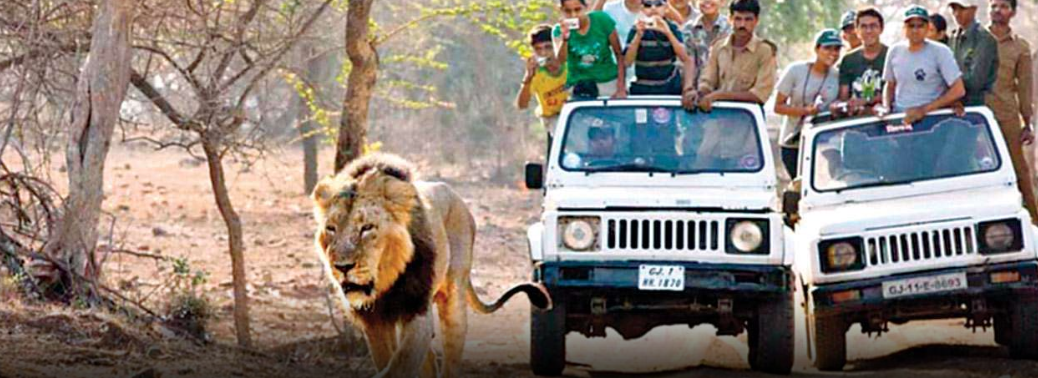
- Indian Council of Medical Research’s National Institute of Virology (NIV) have confirmed the presence of the Canine Distemper Virus (CDV) in at least five of 24 samples that were tested from the GIR forest.
About:
- The 24 samples were tested for CDV and Paramyxoviridiae, and five samples were found to be positive for CDV, the sequence was compared to available CDV sequences and it was found to be related to East African strains.
- These samples were collected between September 19 and 24 and included blood in the EDTA, ocular, nasal, rectal swabs, and visceral organs in viral transport medium.
- Lions contracted a contagious disease after eating contaminated food.
- Considering the threat posed to the endangered species, the research body has recommended CDV vaccine shots for all the lions in Gir as an immediate protective measure.
- Vaccination of lions with CDV should be taken up on an urgent basis as existing CDV vaccine could work as a protective intervention for lions during the current viral outbreak. As the vaccine has proved effective in other countries and it offers protection against CDV for one year.
- As such for the first time a complete genome of CDV was recovered by NIV. The sequence was compared to available CDV sequences and it was found to be related to the East African strains.
- The report says it is critical to place the lions in two or three different sanctuaries to prevent the spread of infectious diseases like CDV and protect them from extinction.
Background:
- Twenty-three lions have died in Gir forest since September 12, prompting the government to launch massive operations to ensure that the infection does not spread to other big cats in their only abode in Asia. The condition of three of over 36 lions, currently under observation of the forest department in Gujarat, is critical. The state government has sought national as well as international help in saving the lions.
- Canine distemper virus is known mainly to cause a severe infection in dogs that could possibly turn fatal. Dogs are considered the primary source of infection and virus transmission. However, CDV may also affect wild carnivores such as wolves, foxes, raccoons, red pandas, ferrets, hyenas, tigers, and lions.
- In canines, distemper affects several body systems, including the gastrointestinal and respiratory tracts and the spinal cord and brain, with common symptoms that include high fever, eye inflammation and eye/nose discharge, laboured breathing and coughing, vomiting and diarrhoea, loss of appetite and lethargy, and hardening of nose and footpads.
- The viral infection can be accompanied by secondary bacterial infections and can present eventual serious neurological symptoms.
- The prevalence of this virus and its diversity in wildlife of India is not adequately studied. A few reports are available regarding the detection of CDV in captive wild carnivores, including tigers and red pandas.
- In 2016, at least four lions that died at Etawah in Uttar Pradesh were infected by the CDV, as confirmed by the Indian Veterinary Research Institute. In early 1994, CDV wiped out 30% of the total lion population in the Serengeti forest areas in East Africa.
- As per the forest department’s 2015 census, Gujarat was home to 523 lions the count having almost doubled since 1990, when it was 284. The latest initial estimates put the count at over 600 lions.
Black Spotted Turtles
16, Oct 2018

- India accounts for 29% of black spotted turtles (Geoclemys hamiltonii) seized from across seven countries in South Asia, states a recent report by TRAFFIC, an international network monitoring trade in wildlife.
About:
- The report names India as the country with the highest number of seizures, accounting for 29% of all turtles seized, and lists Hong Kong second during the study period. Black Spotted Turtles are primarily sourced in India, Pakistan and Bangladesh and subsequently transported to Hong Kong SAR and mainland China, often through Southeast Asian transit hubs.
- The attractive turtle, once wanted for its meat, is now an increasingly popular pet and favoured among wildlife smugglers with many turtles observed for sale in Asian markets or in online trade.
- It’s a major concern that illegal trade of Black Spotted Turtles is on the increase in the country. There was a significant jump was between 2013 and 2015 when the annual number of seizures and individual turtles seized tripled.
- The Black Spotted Turtle trade is largely driven by East Asian demand. This turtle is protected by national laws throughout its natural range and is listed in Appendix I of CITES, prohibiting all commercial international trade. Nevertheless, Asian demand continues to fuel illegal harvesting and smuggling of the species. Overall, although 55 suspects were arrested in connection with seizures between April 2014 and March 2016, confirmed convictions remained scarce, with only 20% of arrests resulting in a conviction.
- These trends highlight the urgent need for intelligence-led investigations and collaborative law enforcement across source, consumer and transit hotspots to dismantle organised criminal networks around the region.
Way Forward:
- Asia’s illegal turtle trade has occurred at such a scale and pace that turtles have now become one of the world’s most threatened groups of animals.
- To stem this tide different groups, need to join efforts and implement multi-prong approaches.
- As one of the leading zoological institutions in Asia, WRS partners organisations like TRAFFIC in trade research to provide resource for law enforcement agencies.
- Enforcement efforts must be improved across the Asian region. Intelligence-led investigations, among relevant enforcement agencies will prove crucial, not only to the disruption of Black Spotted Turtle trade players, but also to the collection of accurate data for trade analysis.
- Reporting efforts should be improved on both national and international levels. On a national level, reporting between local (or regional) and national enforcement authorities will facilitate coordinated enforcement efforts.
- Intelligence-led investigations should be used to ensure strong prosecution, involving high penalties, against traffickers to deter future offenders.
- Public awareness concerning the deteriorating effects of the freshwater turtle trade in general, and the Black Spotted Turtle trade in particular, should be increased.
- Awareness initiatives to reduce demand and to increase knowledge about the illegality of the trade in Black Spotted Turtle should be carried out among consumers in destination countries and among local communities and hunters in source countries.
- Continued research into and monitoring of the Black Spotted Turtle trade should be conducted to improve our understanding of trade trends and dynamics.
- Further research into the status of wild Black Spotted Turtle populations and the conservation impacts of the trade in this species should be conducted.
Spotted Turtle:
- The spotted turtle is a small black turtle with distinct large spots on its carapace (upper shell) and orange-yellow markings on its head, neck and limbs. The spotted turtle is one species whose sex is determined by temperature during embryonic development. The spotted turtle is an active hunter: seeking out prey items in the water by pointing its head into aquatic plants.
- Spotted turtles live in small, shallow bodies of water, such as bogs, marshes, fens, coastal wetlands and small ponds. These turtles move short distances overland to lay their eggs or between overwintering and summer habitat. They usually hibernate communally in the mud at the bottom of wetlands, or in underwater burrows or cavities where the water is roughly 50 to 100 centimetres deep.
Human Animal Conflict
12, Oct 2018
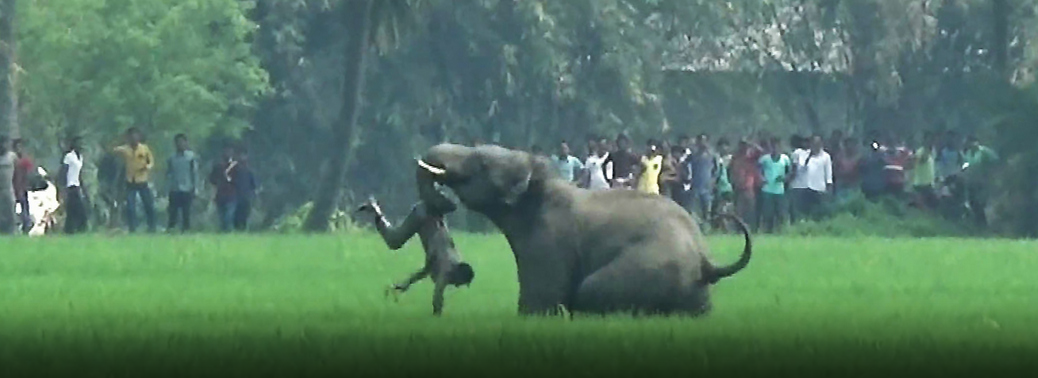
- A study of patterns of leopard attacks here reveal that some areas are high-risk zones requiring urgent conservation measures for the safety of both man and beast.
About:
- There has been an increase in severity of human-wildlife conflicts in India in the last few decades with tiger, Common leopard and Asian elephant being the three most problematic species reported to cause extensive damage to human lives, livestock and property. Today human leopard conflicts are reported across India with major hotspots being Uttarakhand, West Bengal, Himachal Pradesh, Gujarat and Maharashtra
- The foothills of the eastern Himalaya in northern West Bengal called the doors, a landscape comprising tea plantations and forests alone have witnessed more than 700 leopard attacks on people between 1990 and 2016.
- In the western Himalaya (Pauri Garhwal in Uttarakhand), numerous leopards have been killed in retaliation to the human deaths and injuries they have caused. In the western Himalaya (Pauri Garhwal in Uttarakhand), numerous leopards have been killed in retaliation to the human deaths and injuries they have caused.
- The researchers find that around 97% of animal attacks in the dooars and 60% in Pauri resulted in human injuries. While a majority of the victims in Pauri were children and youth, middle-aged tea estate workers were most at risk in the dooars.
- As part of the study, the team also used these data to develop a predictive risk map. This reveals that central and northern Pauri, as well as the protected and peripheral areas of central and south-western dooars are ‘high risk zones.
Cause:
- While an extensive protected area (PA) network and land allotted for agricultural production were cited as two major reasons.
- Other cause of escalation of conflicts in the recent years has been attributed to habitat loss, fragmentation, degradation due to increasing anthropogenic pressures, particularly development, reducing tolerance levels to wildlife, and local abundance of problem species. When the interface between forests and rural inhabitations is a continuum, the leopard has adapted to live in the fringes of human habitations. Due to the behavioural plasticity, wide choice of prey and adaptability to survive on a wide range of human altered habitats, the smaller, agile and adaptable leopard is most often implicated in attacks on people.
- When there are incidents of large cats such as tiger and leopard killing and injuring humans, it evokes a serious public backlash and a setback for conservation efforts.
- Though studies have been periodically conducted within PAs on certain aspects of ecology of such large mammals in India, extensive research on such aspects in regions where they share space with humans are limited. Since the last decade, there has been large scale human out-migration from the mountainous region to the plains due to lack of sustained livelihood resources.
Way Forward:
- They suggest that immediate measures including regular monitoring by wildlife managers and local response teams, providing proper lighting in villages and clearing bushes around houses would be crucial to mitigate conflict.
- Knowledge gained through such studies in human-dominated landscapes help solve complex conservation problems such as human-wildlife conflicts where apart from the dynamics of such events, a thorough understanding of the social aspects of conflicts are essential for implementing further mitigation measures.
- The predictive map highlights potential human-leopard conflict zones and helps formulate mitigation measures for these sites.
- To reduce livestock depredation respondents opined to use predator proof enclosures and lights around households in Pauri whereas in North Bengal people vouched for relocating problem animals, introducing native wild prey in forests and installing predator proof enclosures.
Mandated Flow in Ganga
09, Oct 2018
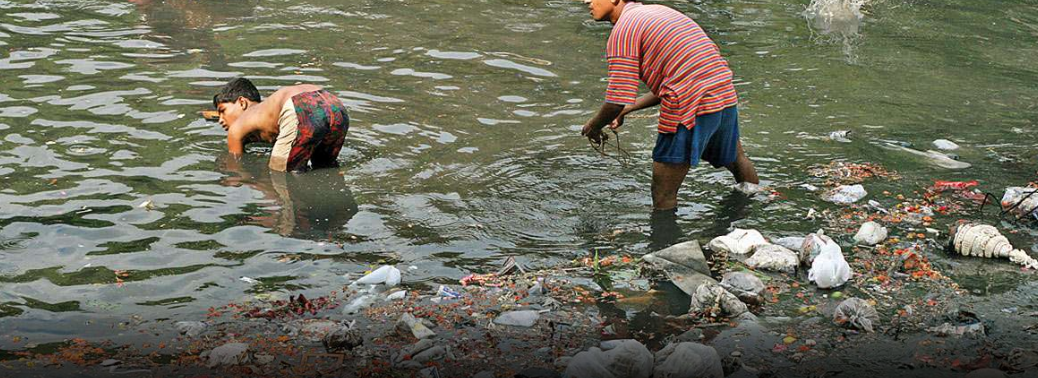
In News:
- In a first, the Union government has mandated the minimum quantity of water or ecological flow as it’s called in scientific circles that various stretches of the Ganga must necessarily have all through the year.
About:
- The River Ganga is the most sacred and deeply revered by the people of this country and the Ganga river basin is the largest river basin in India in terms of catchment area,constituting twenty-six per cent of the country’s land mass and supporting about half a billion
- In India alone, approximately 5,100 large dams dot the rivers, making India rank third in the world with regards to the number of large dams. These structures have irretrievably changed the downstream flow patterns, consequently affecting water quality, temperature, sediment movement and deposition.
- The new norms would require hydropower projects located along the river to modify their operations so as to ensure they are in compliance with new environment flow norms. E-flow (ecological flow) is the quantum of water that must uninterruptedly flow in the river in all the seasons, required for the river to perform all its ecological functions including sustenance of fauna and its human dependents
- Indiscriminate human intervention, in the form of river course diversion, river-bed mining, and damming, has altered the environmental flow of rivers.
Benefits of Ecological Flow:
- Ecological flows help in numerous ways like groundwater recharge, nutrient balancing, fish spawning and sediment flushing. At the same time, free-flowing rivers and stretches also provide innumerable community services like fisheries, tourism and water supply.
- It keeps the biodiversity in that area in fine balance
Water flow Requirements:
- Upper Ganga River Basin Stretch starting from originating glaciers and through respective confluences finally meeting at Devaprayag up to Haridwar
- Stretch of main stem of River Ganga from Haridwar, Uttrakhand to Unnao, Uttar Pradesh
River flow picture:
World experiences:
- These legislations attempt to ensure required minimum flow in the river system to sustain ecosystem services.
- The Mekong River Agreement, 1995
- South Africa’s National Water Act, 1998 and the
- Swiss Water Protection Act, 108
Nilgiri Tahr climb population Charts
21, Aug 2018
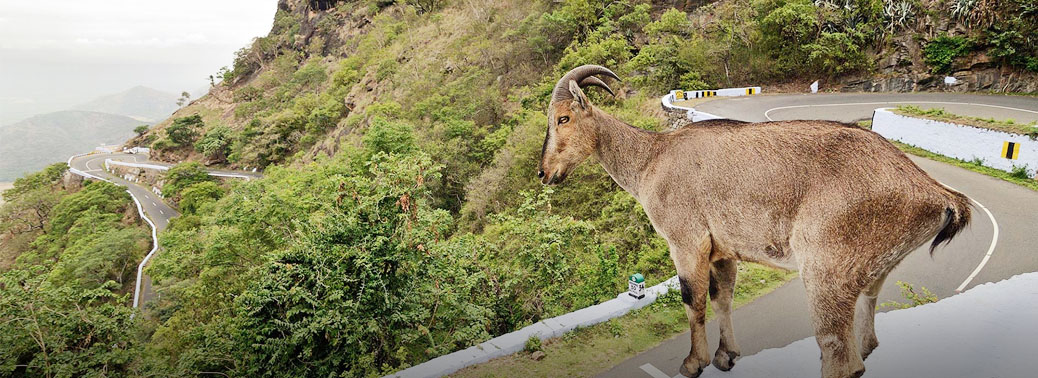
- A recent census has revealed that the population of the Nilgiri tahr (an endangered mountain goat) at the Mukurthi National Park has grown by an impressive 18% in the last two years, from 480 to 568.
Nilgiri Tahr:
- Nilgiri tahrs are stocky goats with short, coarse fur and a bristly mane. Males are larger than the females, and have a darker colour when mature.
- The present distribution of the Nilgiri tahr is limited to approximately 5% of the Western Ghats in southern India, in Kerala and Tamil Nadu in southern India
- The Nilgiri tahr is found at high elevations on cliffs, grass-covered hills, and open terrain.
- Females gestate for about 180 days, and usually give birth to one kid per pregnancy.
- Principal threats are habitat loss mainly from domestic livestock and spread of invasive plants and poaching
- The Nilgiri tahr is fully protected under Schedule I by the Indian Wildlife (Protection) Act of 1972.
- The creation of Eravikulam and Silent Valley National Parks, Mukurti, Anamalai, and Parambikulam Wildlife Sanctuaries, and Srivilliputhur Grizzled Giant Squirrel Sanctuary and the Kalakadu-Mundanthurai Tiger Reserve, together offer an important degree of protection to the Nilgiri Tahr.
- The Tamil Nadu Forest Department is removing exotic monocultures along the periphery of the Mukurti National Park
- Listed as Endangered because its population size is estimated to number fewer than 2,500 mature individuals.
Swachh Bharat mission
21, Aug 2018
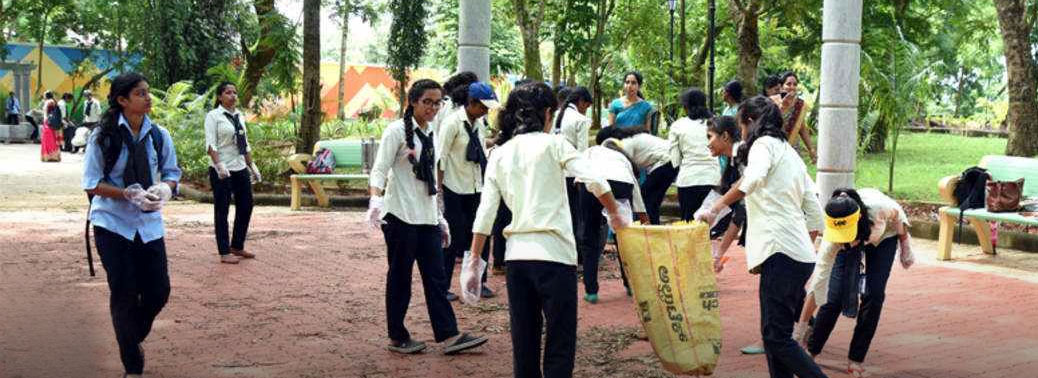
Why in news?
- Under new norms, cities and towns wanting to be declared ODF+ (Open Defecation Free Plus) must also be free of public urination and not just open defecation.
- This is the first time that the Swachh Bharat Mission (Urban) under ministry of housing and urban affairs is officially including the elimination of public urination in its agenda.
- The Mission is focussed on infrastructure and regulatory changes, on the assumption that this will lead to behaviour change.
ODF:
- A city/ward is notified as ODF city/ward if, at any point of the day, not a single person is found defecating in the open. So far, 2,741 cities have been certified as ODF, based mostly on third-party verification of toilet construction.
ODF +:
- A city, ward or work circle could be declared ODF+ if, “at any point of the day, not a single person is found defecating and/or urinating in the open, and all community and public toilets are functional and well-maintained.
ODF ++:
- The ODF++ protocol adds the condition that faecal sludge/septage and sewage is safely managed and treated, with no discharging and/or dumping of untreated faecal sludge/septage and sewage in drains, water bodies or open area.
Swachh Bharat Mission:
Objective of The Mission:
- Elimination of open defecation
- Eradication of Manual Scavenging
- Modern and Scientific Municipal Solid Waste Management
- To effect behavioural change regarding healthy sanitation practices
- Generate awareness about sanitation and its linkage with public health
- Capacity Augmentation for ULBs to create an enabling environment for private sector participation in Capex (capital expenditure) and Opex (operation and maintenance)
Duration of The Mission:
The Mission will be in force till 2nd October 2019
Mission Components:
- Household toilets, including conversion of insanitary latrines into pour-flush latrines
- Community toilets
- Public toilets and urinals
- Solid waste management
- IEC & Public Awareness
- Capacity building and Administrative & Office Expenses (A&OE)
Swachh Survekshan
:
- Swachh Survekshan is a ranking exercise taken up by the Government of India to assess rural and urban areas for their levels of cleanliness and active implementation of Swachhata mission initiatives in a timely and innovative manner.
- The objective of the survey is to encourage large scale citizen participation and create awareness amongst all sections of society about the importance of working together towards making towns and cities a better place to live in.
- Additionally, the survey also intends to foster a spirit of healthy competition among towns and cities to improve their service delivery to citizens, towards creating cleaner cities and towns.
Conservation of dal lake
20, Aug 2018
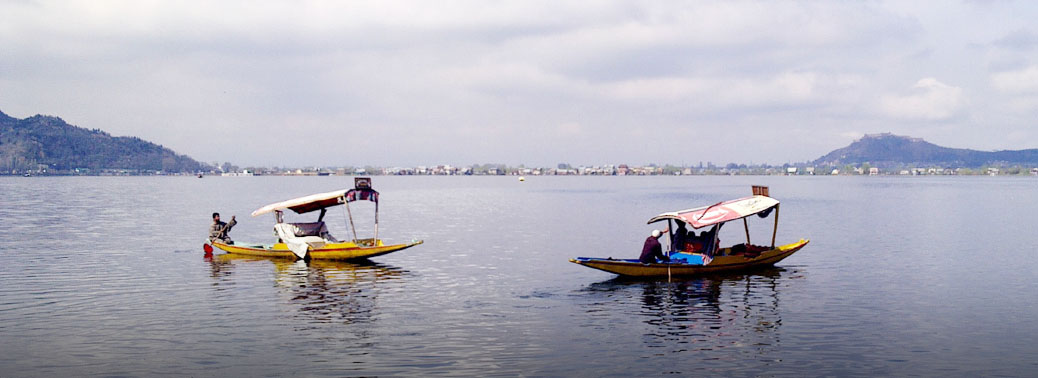
Alarmed over the rapid shrinking of the Dal Lake.
Diminishing Dal lake:
- The size of the Dal Lake had come down from 22 sq.km to about 10 sq.km due to the water quality of the lake which deteriorated because of intense pollution caused by untreated sewage and solid waste released into the water body.
- Pollution is sometimes so bad it turns the lake a brackish green due to sewage from the more than 1,000 houseboats and waste from hotels and homes on shore gets empty into the lake.
- Encroachments of water channels and clogging have diminished the circulation and inflows into the lake, leading to the extensive growth of hyacinth.
- Floating vegetable gardens on reed rafts, some of Kashmir’s biggest vegetable-producing areas, are also major polluters. Pesticides used by farmers find their way into the lake, causing colossal damage to its fauna and flora.
- The garbage dumped into the lake increases the density of weeds and water plants resulting in poor visibility of the lake’s bed.
Suggestions to restore the lake:
-
- Jammu and Kashmir Governor approached Navy chief seeking help to save the water body, a major tourist attraction of the State.so following steps can be taken
- Catchment area treatment of Dal lake includes Afforestation, construction of check dams and bunds.
- Construction of Settling Basins at the mouth of Telbal Nallah with permanent intake structures cum navigational locks to arrest the incoming silt load.
- Marginal dredging along the shoreline for a width of 75 to 90 metres in order to remove the land mass and shoal formation.
- Removal of excessive population within the lake and allowing restricted population to remain in hamlets as a part of lake eco-system
- Effective enactment of laws for encroachments, conservations of open water bodies with floating gardens, land masses.
- Devising method for houseboats sanitation through floating septic tank with proper solid-waste management through NGOs and eco-activists.
Dal lake geography:
- Dalis a fresh water lake in Srinagar, the summer capital of Jammu and Kashmir.
- The urban lake, which is the second largest in the state, is integral to tourism and recreation in Kashmir and is named the “Jewel in the crown of Kashmir” or “Srinagar’s Jewel”.
- The lake is also an important source for commercial operations in fishing and water plant harvesting.
- The ecosystem of Dal is ecologically rich in macrophytes, submerged macrophytes, floating macrophytes and phytoplankton.






